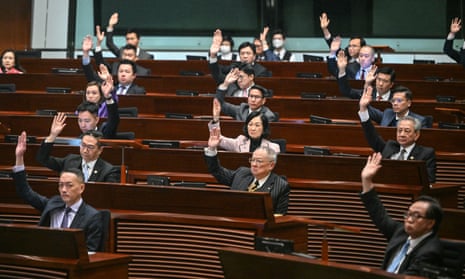Module 10: Buying a “Big Mac” in London: Foreign Direct Investment
Assignment: the world of foreign direct investment, the world of foreign direct investment.
Foreign direct investment (FDI) is a key element in international economic integration. FDI creates direct, stable and long-lasting links between economies. It encourages the transfer of technology and know-how between countries, and allows the host economy to promote its products more widely in international markets. FDI is also an additional source of funding for investment and, under the right policy environment, it can be an important vehicle for development.
FDI is defined as cross-border investment by a resident entity in one economy with the objective of obtaining a lasting interest in an enterprise resident in another economy. The lasting interest implies the existence of a long-term relationship between the direct investor and the enterprise and a significant degree of influence by the direct investor on the management of the enterprise. Ownership of at least 10% of the voting power, representing the influence by the investor, is the basic criterion used. Source: http://www.oecd-ilibrary.org/sites/factbook-2013-en/04/02/01/index.html?itemId=/content/chapter/factbook-2013-34-en
DISCUSSION BOARD ASSIGNMENT:
- RESEARCH FDI on the Internet . You may select FDI in either the U.S. or abroad. For background information, the link to the OECD iLibrary has been provided: OECD iLibrary
- SELECT AN ARTICLE OR NEWS ITEM THAT DEALS WITH FDI. This is a link to an article that I found about China in Time magazine: “Hey China, Foreign Direct Investors Just Aren’t That Into You” http://time.com/13789/hey-china-foreign-investors-just-arent-that-into-you/
- COPY THE LINK TO YOUR ARTICLE into your initial post.
DISCUSSION POSTINGS:
- INITIAL POST (150 – 175 words)
- Briefly describe your article and what it says about FDI . Make sure to include information about any trends that you find in your article. Is FDI on the rise or decline? Is it shifting from one country to another?
- Why is FDI such a good option for businesses that want to go global? What does your article or research say that supports your position?
- What do you think the future is for FDI?
- POST REPONSES TO AT LEAST 2 OF YOUR CLASSMATES. (75 – 100 words)
- International Business. Authored by : Boundless. Provided by : Boundless. Located at : https://www.boundless.com/business/ . License : CC BY-SA: Attribution-ShareAlike
- Navigating FDI: Pro Tips for International Economics Tasks

Foreign Direct Investment Analysis: Expert Tips for Your International Economics Assignment

Navigating the intricacies of Foreign Direct Investment (FDI) demands a nuanced understanding of international economics. As an expert guiding students through their assignments, I emphasize several key tips for effective FDI analysis. First and foremost, comprehend the host country's economic and political climate. Students must evaluate stability, government policies, and potential risks to make informed predictions about investment outcomes. If you need assistance with your international economics assignment , understanding the complexities of FDI analysis and its implications can provide valuable insights and support for your academic tasks.
Next, delve into the specific industry's dynamics. Analyzing market trends, competition, and regulatory frameworks provides crucial insights into the feasibility of FDI. Moreover, a comprehensive understanding of the investor's home country and its economic conditions is vital. Students must consider factors such as exchange rates, inflation, and monetary policies to evaluate the potential impact on their investment.
Furthermore, emphasize the importance of cultural awareness. A successful FDI analysis recognizes the significance of cultural nuances, consumer behaviors, and local preferences in shaping business strategies. This global perspective contributes to building sustainable and profitable investments.

Lastly, stress the need for continuous monitoring and adaptation. Economic landscapes are dynamic, requiring students to stay updated on market changes and adjust their strategies accordingly. By instilling these expert tips, students can master the intricacies of FDI analysis, demonstrating a holistic understanding of international economics in their assignments.
Understanding the Dynamics of Foreign Direct Investment: A Comprehensive Guide
In the realm of international economics, comprehending the intricacies of Foreign Direct Investment (FDI) is essential for students seeking a holistic understanding of global economic relations. As an expert guiding students through their assignments, providing a comprehensive guide to unravel the complexities surrounding FDI becomes paramount.
FDI, defined as the investment made by a company or individual in one country into business interests located in another, stands out as a critical factor influencing global economic landscapes. For students delving into this subject, it is imperative to grasp the motivations behind FDI, which can be categorized into market-seeking, resource-seeking, and efficiency-seeking. These motivations lay the groundwork for a nuanced analysis of FDI patterns.
Governmental policies and regulations play a pivotal role in the dynamics of FDI. Students must understand how host country policies impact these investments, with governments often implementing measures such as tax incentives, regulatory reforms, and infrastructure development to attract foreign investors. Conversely, stringent regulations, political instability, or expropriation risks may act as deterrents. A thorough examination of the regulatory environment is crucial for understanding the opportunities and challenges associated with FDI.
The role of multinational corporations (MNCs) is equally significant in the FDI landscape. MNCs, as key actors, drive cross-border investments, leveraging their global reach and competitive advantages. Analyzing the strategies employed by MNCs in their FDI endeavors provides valuable insights into the intricate web of international economic relations.
Considering the impact of FDI on host and home countries is vital. For host nations, FDI can lead to job creation, technology transfer, and infrastructural development. However, it also raises concerns about dependency, loss of sovereignty, and potential negative environmental and social impacts. On the home front, countries exporting capital through FDI benefit from increased market access, diversification, and the acquisition of new skills and technologies.
Understanding FDI within the context of economic theories is also crucial. Classical theories, exemplified by John Dunning's eclectic paradigm, emphasize the interplay between ownership advantages, location advantages, and internalization advantages that drive FDI decisions. Contemporary theories, including the OLI framework, delve into the complexities of FDI in a globalized world.
For students navigating international economics assignments, unraveling the dynamics of FDI is akin to deciphering a multifaceted puzzle. Grasping the motivations behind FDI, evaluating the impact of government policies, recognizing the role of MNCs, and understanding the consequences for host and home countries are crucial components of this intricate subject. As an expert guide, providing a comprehensive overview of FDI ensures that students gain a nuanced perspective, enabling them to analyze the intricacies of the global economic landscape with confidence and insight.
Key Concepts and Theories Shaping Foreign Direct Investment Analysis
In the realm of international economics, comprehending the key concepts and theories shaping Foreign Direct Investment (FDI) analysis is indispensable for students striving to unravel the complexities of global economic interactions. As an expert guiding students through their international economics assignments, it is imperative to elucidate the fundamental notions governing FDI.
Firstly, the eclectic paradigm, proposed by John Dunning, underscores the significance of ownership, location, and internalization advantages in determining the extent of foreign investment. This theoretical framework forms the bedrock for understanding why firms opt for FDI over other forms of international expansion.
Additionally, the OLI framework complements the eclectic paradigm, emphasizing the crucial role of firm-specific advantages, location-specific advantages, and internalization advantages in shaping FDI decisions. By imparting a nuanced understanding of these concepts, students gain insights into the strategic motivations driving cross-border investments.
Furthermore, the gravity model of international trade, often extended to FDI analysis, postulates that the magnitude of FDI between two countries is directly proportional to their economic size and inversely proportional to the distance between them. Unraveling the intricacies of this model equips students with a predictive lens, allowing them to discern patterns and make informed projections regarding FDI patterns.
As an expert mentor in international economics, facilitating students' grasp of these key concepts and theories empowers them to navigate the dynamic landscape of Foreign Direct Investment with acumen and analytical finesse.
Measuring the Impact: Techniques and Metrics for Evaluating Foreign Direct Investment in International Economics
In the ever-evolving realm of international economics, evaluating the impact of Foreign Direct Investment (FDI) stands as a pivotal task. Guiding students through the complexities of this field, it is imperative to unravel the techniques and metrics essential for comprehending the consequences of FDI on host and home countries.
One indispensable metric for gauging the repercussions of FDI is economic growth. FDI can act as a catalyst for development, propelling domestic investment, fostering technological advancements, and generating employment. Scrutinizing GDP growth, changes in employment rates, and the evolution of technological innovation provides students with tangible measures to assess FDI's contributions to a host nation's economic landscape.
Trade dynamics constitute another critical dimension. FDI has the potential to reshape a country's trade patterns, influencing exports and imports. Students are urged to scrutinize the trade balance before and after significant FDI inflows, examining whether the host country experiences a trade surplus or deficit. This analysis sheds light on how FDI impacts a nation's trade competitiveness and integration into the global market.
Moreover, students guided by an expert delve into the intricacies of employment and wage dynamics influenced by FDI. Analyzing labor market trends enables them to determine whether FDI leads to job creation, skill enhancement, and wage growth. Simultaneously, students investigate potential negative consequences, such as labor exploitation or displacement, fostering a nuanced understanding of FDI's social implications.
In their assignments, an expert perspective emphasizes the examination of technological spillover effects. This involves assessing whether FDI facilitates advancements in research and development, innovation, and the overall technological capacity of the host nation. By scrutinizing the transfer of technology from multinational corporations to domestic industries, students gain insights into the long-term benefits of FDI in enhancing a country's competitiveness.
Additionally, an expert in international economics underscores the significance of governance and institutional factors. Evaluating the regulatory environment, legal frameworks, and political stability in the host country allows students to gauge the ease of doing business and potential risks associated with FDI. This comprehensive analysis assists in predicting the sustainability and effectiveness of FDI in the given economic context.
Measuring the impact of FDI in international economics demands a comprehensive approach. An expert's guidance focuses on economic growth, trade dynamics, employment, technological spillovers, and governance factors. By mastering these techniques and metrics, students develop a nuanced understanding of FDI's implications on both host and home countries, enhancing their proficiency in the field of international economics.
Risk Assessment in Foreign Direct Investment: A Roadmap for Effective International Economics Assignments
In the dynamic landscape of global economics, Foreign Direct Investment (FDI) plays a pivotal role in shaping the interconnected web of international relations and trade. For students venturing into the realm of international economics assignments, understanding the nuances of risk assessment in FDI becomes imperative. As an expert guiding students through these assignments, it is crucial to provide them with a comprehensive roadmap that navigates the complexities of evaluating risks associated with foreign investments.
Foreign Direct Investment refers to the investment made by an entity from one country into a business or assets located in another country. While it offers tremendous opportunities for economic growth and development, it is not without its inherent risks. These risks stem from various factors, including political instability, economic uncertainties, regulatory changes, and cultural differences, to name a few. As an expert, it is essential to instill in students a systematic approach to identify, analyze, and manage these risks effectively.
The first step in the roadmap for risk assessment in FDI involves a thorough understanding of the host country's political and economic environment. Political stability is a cornerstone for successful investments, and students must evaluate the political climate, government policies, and potential geopolitical risks. A comprehensive analysis of economic indicators, such as inflation rates, GDP growth, and exchange rates, aids in gauging the overall economic health of the host nation.
Furthermore, regulatory frameworks can significantly impact the success of an FDI venture. Changes in laws, trade policies, and tax regulations can pose challenges for investors. Students must be adept at researching and understanding the legal landscape of the host country to assess the regulatory risks associated with FDI. An expert should guide them in identifying potential legal hurdles and developing strategies to navigate through them.
Cultural differences are another facet that students must delve into when assessing FDI risks. Cultural nuances can affect communication, negotiation, and overall business operations. An expert perspective should emphasize the importance of cultural intelligence and its role in building effective cross-cultural relationships. Students should be encouraged to explore cultural aspects such as language, business etiquette, and social customs to mitigate the challenges posed by cultural differences.
In addition to country-specific risks, students must also consider industry-specific risks associated with FDI. An expert should highlight the significance of market research and industry analysis in understanding the competitive landscape, demand-supply dynamics, and technological advancements. By incorporating industry-specific insights into their assignments, students can tailor their risk assessments to the unique challenges posed by different sectors.
A comprehensive risk assessment in FDI assignments must also incorporate strategies for risk mitigation and management. Students should be guided in developing contingency plans, diversifying investments, and engaging in effective stakeholder communication. Moreover, an expert perspective should stress the importance of staying updated on global economic trends, as external factors can influence FDI risks.
The roadmap for risk assessment in Foreign Direct Investment should encompass political, economic, regulatory, and cultural dimensions. By instilling a systematic and holistic approach, students can gain the analytical skills necessary to navigate the intricacies of FDI risks. Ultimately, fostering a deep understanding of these complexities will empower students to contribute meaningfully to the field of international economics and make informed decisions in the realm of global investments.
Analyzing the Determinants of Foreign Direct Investment: Strategies for a Robust Economic Assignment
In the realm of international economics, my expertise lies in guiding students through the intricate landscape of Foreign Direct Investment (FDI). The analysis of FDI determinants is crucial for understanding the dynamics that shape economies and foster global growth. Crafting a compelling economic assignment on this topic requires a strategic focus on key factors that influence investment decisions without overreliance on the term "FDI." Here, I outline essential strategies for students to develop a robust assignment on the determinants of cross-border investments.
To commence this analytical journey, students must first grasp the fundamental concept of FDI, where a resident entity in one economy invests in an enterprise in another economy, yielding a lasting interest and significant influence. Delving into the motives behind FDI is vital, exploring whether companies are driven by market-seeking, efficiency-seeking, or resource-seeking objectives.
Economic, political, and regulatory environments significantly impact FDI decisions. Therefore, students should delve into these determinants in their assignments, analyzing the host country's economic stability, growth prospects, and market potential. Additionally, exploring the political climate and regulatory framework provides valuable insights into the risks associated with foreign investments.
Exchange rate fluctuations can influence FDI decisions, affecting the cost and return on investment. Students should investigate how these movements impact a host country's attractiveness for foreign investors, demonstrating a nuanced understanding of the economic dynamics at play.
Infrastructure development is another critical determinant influencing FDI. Investors often seek regions with well-developed infrastructure, as it facilitates smooth business operations and reduces operational costs. Students should explore how infrastructure, including transportation, communication, and energy facilities, affects FDI decisions, using case studies to illustrate practical implications.
Political stability and governance are paramount factors influencing FDI. An expertly crafted assignment should delve into the impact of political stability, the rule of law, and corruption levels on foreign investors' confidence. Governments that implement transparent policies and maintain a stable political environment are more likely to attract long-term investments.
Lastly, students should explore the role of technology in shaping FDI decisions. The digital era has transformed the business landscape, and understanding how technological advancements influence investment choices is essential. Whether it's the presence of a skilled workforce or accessibility to cutting-edge technologies, students should analyze how technology contributes to a host country's appeal for foreign investors.
Analyzing the determinants of Foreign Direct Investment necessitates a multifaceted approach encompassing economic, political, regulatory, and technological factors. As an expert guiding students in international economics assignments, I emphasize the importance of a comprehensive understanding of these determinants. By incorporating real-world examples, case studies, and a nuanced analysis, students can produce assignments that showcase their mastery of the complex dynamics surrounding FDI, preparing them for success in the dynamic field of international economics.
In conclusion, delving into the intricacies of Foreign Direct Investment (FDI) within the realm of international economics offers students a unique opportunity to comprehend the dynamic forces shaping global economic landscapes. As an expert guiding students through their assignments in this domain, it is evident that FDI analysis is not merely an academic exercise but a practical exploration of the intricate web connecting nations, industries, and investors.
Through the lens of our expertise, it becomes apparent that successful FDI analysis demands a multifaceted approach. From understanding the host country's economic and political climate to evaluating the investor's strategic motives, students are encouraged to adopt a holistic perspective. The complexities surrounding FDI involve assessing risk factors, regulatory environments, and macroeconomic indicators, ensuring a comprehensive grasp of the forces influencing investment decisions.
Furthermore, the significance of strategic considerations in the FDI process cannot be overstated. From aligning corporate objectives with global market trends to navigating cultural nuances, students are urged to appreciate the strategic foresight required for successful FDI ventures. The ever-evolving nature of international economics necessitates an adaptive mindset, emphasizing the importance of staying abreast of geopolitical developments and market dynamics.
As an expert guide, it is paramount to instill in students the recognition that FDI is not a one-size-fits-all concept. Variables such as market size, resource availability, and technological advancements contribute to the intricate puzzle that is international investment. Consequently, our role involves empowering students with the analytical tools to dissect these variables and synthesize informed conclusions, fostering a deeper understanding of the nuanced interplay within the global economic arena.
In conclusion, navigating the complexities of FDI analysis is both a scholarly pursuit and a preparation for real-world economic engagement. As students embark on the journey of dissecting international economics assignments, the expert advice provided seeks to equip them with the critical thinking skills and practical insights necessary for deciphering the intricacies of Foreign Direct Investment in our interconnected world.
Post a comment...
Navigating fdi: pro tips for international economics tasks submit your assignment, attached files.
- Search Search Please fill out this field.
- International Markets
Foreign Investment: Definition, How It Works, and Types
James Chen, CMT is an expert trader, investment adviser, and global market strategist.
:max_bytes(150000):strip_icc():format(webp)/photo__james_chen-5bfc26144cedfd0026c00af8.jpeg)
Investopedia / Daniel Fishel
What Is Foreign Investment?
Foreign investment involves capital flows from one country to another, granting the foreign investors extensive ownership stakes in domestic companies and assets. Foreign investment denotes that foreigners have an active role in management as a part of their investment or an equity stake large enough to enable the foreign investor to influence business strategy. A modern trend leans toward globalization , where multinational firms have investments in a variety of countries.
Key Takeaways
- Foreign investment refers to the investment in domestic companies and assets of another country by a foreign investor.
- Large multinational corporations will seek new opportunities for economic growth by opening branches and expanding their investments in other countries.
- Foreign direct investments include long-term physical investments made by a company in a foreign country, such as opening plants or purchasing buildings.
- Foreign indirect investment involves corporations, financial institutions, and private investors that purchase shares in foreign companies that trade on a foreign stock exchange.
- Commercial loans are another type of foreign investment and involve bank loans issued by domestic banks to businesses in foreign countries or the governments of those countries.
How Foreign Investment Works
Foreign investment is largely seen as a catalyst for economic growth in the future. Foreign investments can be made by individuals, but are most often endeavors pursued by companies and corporations with substantial assets looking to expand their reach.
As globalization increases, more and more companies have branches in countries around the world. For some multinational corporations , opening new manufacturing and production plants in a different country is attractive because of the opportunities for cheaper production and labor costs.
Additionally, these large corporations frequently look to do business with those countries where they will pay the least amount of taxes. They may do this by relocating their home office or parts of their business to a country that is a tax haven or has favorable tax laws aimed at attracting foreign investors.
Some of the more popular tax haven countries that attract foreign investors include the Bahamas, Bermuda, Monaco, Luxembourg, Mauritius, and the Cayman Islands.
Direct vs. Indirect Foreign Investments
Foreign investments can be classified in one of two ways: direct and indirect. Foreign direct investments (FDIs) are the physical investments and purchases made by a company in a foreign country, typically by opening plants and buying buildings, machines, factories, and other equipment in the foreign country. These types of investments find a far greater deal of favor, as they are generally considered long-term investments and help bolster the foreign country’s economy.
Foreign indirect investments involve corporations, financial institutions, and private investors buying stakes or positions in foreign companies that trade on a foreign stock exchange . In general, this form of foreign investment is less favorable, as the domestic company can easily sell off their investment very quickly, sometimes within days of the purchase. This type of investment is also sometimes referred to as a foreign portfolio investment (FPI). Indirect investments include not only equity instruments such as stocks, but also debt instruments such as bonds.
Other Types of Foreign Investment
There are two additional types of foreign investments to be considered: commercial loans and official flows. Commercial loans are typically in the form of bank loans that are issued by a domestic bank to businesses in foreign countries or the governments of those countries. Official flows is a general term that refers to different forms of developmental assistance that developed or developing nations are given by a domestic country.
Commercial loans, up until the 1980s, were the largest source of foreign investment throughout developing countries and emerging markets. Following this period, commercial loan investments plateaued, and direct investments and portfolio investments increased significantly around the globe.
Multilateral Development Banks
A different kind of foreign investor is the multilateral development bank (MDB), which is an international financial institution that invests in developing countries in an effort to encourage economic stability. Unlike commercial lenders who have an investment objective to maximize profit, MDBs use their foreign investments to fund projects that support a country's economic and social development.
The investments—which typically take the form of low- or no-interest loans with favorable terms—might fund the building of an infrastructure project or provide the country with the capital needed to create new industries and jobs. Examples of multilateral development banks include the World Bank and the Inter-American Development Bank (IDB).
:max_bytes(150000):strip_icc():format(webp)/Manmid-ageBlack-JoseLuisPelaezInc-37b14b1e84d64eb5a599dfff1faf3090.jpg)
- Terms of Service
- Editorial Policy
- Privacy Policy
- Your Privacy Choices
- Search Menu
- Advance articles
- Featured articles
- Virtual Issues
- Browse content in B - History of Economic Thought, Methodology, and Heterodox Approaches
- Browse content in B4 - Economic Methodology
- B49 - Other
- Browse content in C - Mathematical and Quantitative Methods
- Browse content in C0 - General
- C01 - Econometrics
- Browse content in C1 - Econometric and Statistical Methods and Methodology: General
- C10 - General
- C11 - Bayesian Analysis: General
- C12 - Hypothesis Testing: General
- C13 - Estimation: General
- C14 - Semiparametric and Nonparametric Methods: General
- C15 - Statistical Simulation Methods: General
- Browse content in C2 - Single Equation Models; Single Variables
- C21 - Cross-Sectional Models; Spatial Models; Treatment Effect Models; Quantile Regressions
- C22 - Time-Series Models; Dynamic Quantile Regressions; Dynamic Treatment Effect Models; Diffusion Processes
- C23 - Panel Data Models; Spatio-temporal Models
- C26 - Instrumental Variables (IV) Estimation
- Browse content in C3 - Multiple or Simultaneous Equation Models; Multiple Variables
- C31 - Cross-Sectional Models; Spatial Models; Treatment Effect Models; Quantile Regressions; Social Interaction Models
- C33 - Panel Data Models; Spatio-temporal Models
- C34 - Truncated and Censored Models; Switching Regression Models
- C35 - Discrete Regression and Qualitative Choice Models; Discrete Regressors; Proportions
- C36 - Instrumental Variables (IV) Estimation
- Browse content in C4 - Econometric and Statistical Methods: Special Topics
- C41 - Duration Analysis; Optimal Timing Strategies
- C44 - Operations Research; Statistical Decision Theory
- Browse content in C5 - Econometric Modeling
- C50 - General
- C51 - Model Construction and Estimation
- C52 - Model Evaluation, Validation, and Selection
- C53 - Forecasting and Prediction Methods; Simulation Methods
- C55 - Large Data Sets: Modeling and Analysis
- C57 - Econometrics of Games and Auctions
- Browse content in C6 - Mathematical Methods; Programming Models; Mathematical and Simulation Modeling
- C61 - Optimization Techniques; Programming Models; Dynamic Analysis
- C62 - Existence and Stability Conditions of Equilibrium
- C63 - Computational Techniques; Simulation Modeling
- C67 - Input-Output Models
- Browse content in C7 - Game Theory and Bargaining Theory
- C70 - General
- C72 - Noncooperative Games
- C73 - Stochastic and Dynamic Games; Evolutionary Games; Repeated Games
- C78 - Bargaining Theory; Matching Theory
- Browse content in C8 - Data Collection and Data Estimation Methodology; Computer Programs
- C83 - Survey Methods; Sampling Methods
- Browse content in C9 - Design of Experiments
- C90 - General
- C91 - Laboratory, Individual Behavior
- C92 - Laboratory, Group Behavior
- C93 - Field Experiments
- Browse content in D - Microeconomics
- Browse content in D0 - General
- D01 - Microeconomic Behavior: Underlying Principles
- D02 - Institutions: Design, Formation, Operations, and Impact
- D03 - Behavioral Microeconomics: Underlying Principles
- Browse content in D1 - Household Behavior and Family Economics
- D11 - Consumer Economics: Theory
- D12 - Consumer Economics: Empirical Analysis
- D13 - Household Production and Intrahousehold Allocation
- D14 - Household Saving; Personal Finance
- D15 - Intertemporal Household Choice: Life Cycle Models and Saving
- D18 - Consumer Protection
- Browse content in D2 - Production and Organizations
- D21 - Firm Behavior: Theory
- D22 - Firm Behavior: Empirical Analysis
- D23 - Organizational Behavior; Transaction Costs; Property Rights
- D24 - Production; Cost; Capital; Capital, Total Factor, and Multifactor Productivity; Capacity
- D25 - Intertemporal Firm Choice: Investment, Capacity, and Financing
- D29 - Other
- Browse content in D3 - Distribution
- D31 - Personal Income, Wealth, and Their Distributions
- Browse content in D4 - Market Structure, Pricing, and Design
- D40 - General
- D41 - Perfect Competition
- D42 - Monopoly
- D43 - Oligopoly and Other Forms of Market Imperfection
- D44 - Auctions
- D47 - Market Design
- Browse content in D5 - General Equilibrium and Disequilibrium
- D50 - General
- D51 - Exchange and Production Economies
- D52 - Incomplete Markets
- D53 - Financial Markets
- D57 - Input-Output Tables and Analysis
- D58 - Computable and Other Applied General Equilibrium Models
- Browse content in D6 - Welfare Economics
- D60 - General
- D61 - Allocative Efficiency; Cost-Benefit Analysis
- D62 - Externalities
- D63 - Equity, Justice, Inequality, and Other Normative Criteria and Measurement
- D64 - Altruism; Philanthropy
- Browse content in D7 - Analysis of Collective Decision-Making
- D70 - General
- D71 - Social Choice; Clubs; Committees; Associations
- D72 - Political Processes: Rent-seeking, Lobbying, Elections, Legislatures, and Voting Behavior
- D73 - Bureaucracy; Administrative Processes in Public Organizations; Corruption
- D74 - Conflict; Conflict Resolution; Alliances; Revolutions
- D78 - Positive Analysis of Policy Formulation and Implementation
- Browse content in D8 - Information, Knowledge, and Uncertainty
- D80 - General
- D81 - Criteria for Decision-Making under Risk and Uncertainty
- D82 - Asymmetric and Private Information; Mechanism Design
- D83 - Search; Learning; Information and Knowledge; Communication; Belief; Unawareness
- D84 - Expectations; Speculations
- D85 - Network Formation and Analysis: Theory
- D86 - Economics of Contract: Theory
- Browse content in D9 - Micro-Based Behavioral Economics
- D90 - General
- D91 - Role and Effects of Psychological, Emotional, Social, and Cognitive Factors on Decision Making
- D92 - Intertemporal Firm Choice, Investment, Capacity, and Financing
- Browse content in E - Macroeconomics and Monetary Economics
- Browse content in E0 - General
- E03 - Behavioral Macroeconomics
- Browse content in E1 - General Aggregative Models
- E10 - General
- E12 - Keynes; Keynesian; Post-Keynesian
- E13 - Neoclassical
- E17 - Forecasting and Simulation: Models and Applications
- Browse content in E2 - Consumption, Saving, Production, Investment, Labor Markets, and Informal Economy
- E20 - General
- E21 - Consumption; Saving; Wealth
- E22 - Investment; Capital; Intangible Capital; Capacity
- E23 - Production
- E24 - Employment; Unemployment; Wages; Intergenerational Income Distribution; Aggregate Human Capital; Aggregate Labor Productivity
- E25 - Aggregate Factor Income Distribution
- E26 - Informal Economy; Underground Economy
- E27 - Forecasting and Simulation: Models and Applications
- Browse content in E3 - Prices, Business Fluctuations, and Cycles
- E30 - General
- E31 - Price Level; Inflation; Deflation
- E32 - Business Fluctuations; Cycles
- Browse content in E4 - Money and Interest Rates
- E40 - General
- E41 - Demand for Money
- E42 - Monetary Systems; Standards; Regimes; Government and the Monetary System; Payment Systems
- E43 - Interest Rates: Determination, Term Structure, and Effects
- E44 - Financial Markets and the Macroeconomy
- E49 - Other
- Browse content in E5 - Monetary Policy, Central Banking, and the Supply of Money and Credit
- E50 - General
- E51 - Money Supply; Credit; Money Multipliers
- E52 - Monetary Policy
- E58 - Central Banks and Their Policies
- Browse content in E6 - Macroeconomic Policy, Macroeconomic Aspects of Public Finance, and General Outlook
- E60 - General
- E61 - Policy Objectives; Policy Designs and Consistency; Policy Coordination
- E62 - Fiscal Policy
- E65 - Studies of Particular Policy Episodes
- Browse content in E7 - Macro-Based Behavioral Economics
- E70 - General
- E71 - Role and Effects of Psychological, Emotional, Social, and Cognitive Factors on the Macro Economy
- Browse content in F - International Economics
- Browse content in F1 - Trade
- F10 - General
- F11 - Neoclassical Models of Trade
- F12 - Models of Trade with Imperfect Competition and Scale Economies; Fragmentation
- F13 - Trade Policy; International Trade Organizations
- F14 - Empirical Studies of Trade
- F15 - Economic Integration
- F16 - Trade and Labor Market Interactions
- F17 - Trade Forecasting and Simulation
- F18 - Trade and Environment
- F19 - Other
- Browse content in F2 - International Factor Movements and International Business
- F22 - International Migration
- F23 - Multinational Firms; International Business
- Browse content in F3 - International Finance
- F30 - General
- F31 - Foreign Exchange
- F32 - Current Account Adjustment; Short-Term Capital Movements
- F33 - International Monetary Arrangements and Institutions
- F34 - International Lending and Debt Problems
- F36 - Financial Aspects of Economic Integration
- Browse content in F4 - Macroeconomic Aspects of International Trade and Finance
- F40 - General
- F41 - Open Economy Macroeconomics
- F42 - International Policy Coordination and Transmission
- F43 - Economic Growth of Open Economies
- F44 - International Business Cycles
- Browse content in F5 - International Relations, National Security, and International Political Economy
- F50 - General
- F53 - International Agreements and Observance; International Organizations
- Browse content in F6 - Economic Impacts of Globalization
- F60 - General
- F63 - Economic Development
- F64 - Environment
- F65 - Finance
- Browse content in G - Financial Economics
- Browse content in G0 - General
- G01 - Financial Crises
- G02 - Behavioral Finance: Underlying Principles
- Browse content in G1 - General Financial Markets
- G10 - General
- G11 - Portfolio Choice; Investment Decisions
- G12 - Asset Pricing; Trading volume; Bond Interest Rates
- G13 - Contingent Pricing; Futures Pricing
- G14 - Information and Market Efficiency; Event Studies; Insider Trading
- G15 - International Financial Markets
- G18 - Government Policy and Regulation
- Browse content in G2 - Financial Institutions and Services
- G20 - General
- G21 - Banks; Depository Institutions; Micro Finance Institutions; Mortgages
- G22 - Insurance; Insurance Companies; Actuarial Studies
- G23 - Non-bank Financial Institutions; Financial Instruments; Institutional Investors
- G24 - Investment Banking; Venture Capital; Brokerage; Ratings and Ratings Agencies
- G28 - Government Policy and Regulation
- Browse content in G3 - Corporate Finance and Governance
- G30 - General
- G31 - Capital Budgeting; Fixed Investment and Inventory Studies; Capacity
- G32 - Financing Policy; Financial Risk and Risk Management; Capital and Ownership Structure; Value of Firms; Goodwill
- G33 - Bankruptcy; Liquidation
- G34 - Mergers; Acquisitions; Restructuring; Corporate Governance
- G38 - Government Policy and Regulation
- Browse content in G4 - Behavioral Finance
- G40 - General
- G41 - Role and Effects of Psychological, Emotional, Social, and Cognitive Factors on Decision Making in Financial Markets
- Browse content in H - Public Economics
- Browse content in H0 - General
- H00 - General
- Browse content in H1 - Structure and Scope of Government
- H11 - Structure, Scope, and Performance of Government
- Browse content in H2 - Taxation, Subsidies, and Revenue
- H20 - General
- H21 - Efficiency; Optimal Taxation
- H23 - Externalities; Redistributive Effects; Environmental Taxes and Subsidies
- H24 - Personal Income and Other Nonbusiness Taxes and Subsidies; includes inheritance and gift taxes
- H25 - Business Taxes and Subsidies
- H26 - Tax Evasion and Avoidance
- Browse content in H3 - Fiscal Policies and Behavior of Economic Agents
- H30 - General
- H31 - Household
- Browse content in H4 - Publicly Provided Goods
- H41 - Public Goods
- Browse content in H5 - National Government Expenditures and Related Policies
- H50 - General
- H51 - Government Expenditures and Health
- H52 - Government Expenditures and Education
- H53 - Government Expenditures and Welfare Programs
- H55 - Social Security and Public Pensions
- H56 - National Security and War
- Browse content in H6 - National Budget, Deficit, and Debt
- H60 - General
- H63 - Debt; Debt Management; Sovereign Debt
- Browse content in H7 - State and Local Government; Intergovernmental Relations
- H71 - State and Local Taxation, Subsidies, and Revenue
- Browse content in H8 - Miscellaneous Issues
- H81 - Governmental Loans; Loan Guarantees; Credits; Grants; Bailouts
- Browse content in I - Health, Education, and Welfare
- Browse content in I0 - General
- I00 - General
- Browse content in I1 - Health
- I10 - General
- I11 - Analysis of Health Care Markets
- I12 - Health Behavior
- I13 - Health Insurance, Public and Private
- I14 - Health and Inequality
- I15 - Health and Economic Development
- I18 - Government Policy; Regulation; Public Health
- Browse content in I2 - Education and Research Institutions
- I20 - General
- I21 - Analysis of Education
- I22 - Educational Finance; Financial Aid
- I23 - Higher Education; Research Institutions
- I24 - Education and Inequality
- I25 - Education and Economic Development
- I26 - Returns to Education
- I28 - Government Policy
- Browse content in I3 - Welfare, Well-Being, and Poverty
- I30 - General
- I31 - General Welfare
- I32 - Measurement and Analysis of Poverty
- I38 - Government Policy; Provision and Effects of Welfare Programs
- I39 - Other
- Browse content in J - Labor and Demographic Economics
- Browse content in J0 - General
- J00 - General
- J01 - Labor Economics: General
- J08 - Labor Economics Policies
- Browse content in J1 - Demographic Economics
- J10 - General
- J11 - Demographic Trends, Macroeconomic Effects, and Forecasts
- J12 - Marriage; Marital Dissolution; Family Structure; Domestic Abuse
- J13 - Fertility; Family Planning; Child Care; Children; Youth
- J14 - Economics of the Elderly; Economics of the Handicapped; Non-Labor Market Discrimination
- J15 - Economics of Minorities, Races, Indigenous Peoples, and Immigrants; Non-labor Discrimination
- J16 - Economics of Gender; Non-labor Discrimination
- J17 - Value of Life; Forgone Income
- Browse content in J2 - Demand and Supply of Labor
- J20 - General
- J21 - Labor Force and Employment, Size, and Structure
- J22 - Time Allocation and Labor Supply
- J23 - Labor Demand
- J24 - Human Capital; Skills; Occupational Choice; Labor Productivity
- Browse content in J3 - Wages, Compensation, and Labor Costs
- J30 - General
- J31 - Wage Level and Structure; Wage Differentials
- J32 - Nonwage Labor Costs and Benefits; Retirement Plans; Private Pensions
- J33 - Compensation Packages; Payment Methods
- J38 - Public Policy
- Browse content in J4 - Particular Labor Markets
- J41 - Labor Contracts
- J42 - Monopsony; Segmented Labor Markets
- J44 - Professional Labor Markets; Occupational Licensing
- Browse content in J5 - Labor-Management Relations, Trade Unions, and Collective Bargaining
- J50 - General
- J52 - Dispute Resolution: Strikes, Arbitration, and Mediation; Collective Bargaining
- Browse content in J6 - Mobility, Unemployment, Vacancies, and Immigrant Workers
- J60 - General
- J61 - Geographic Labor Mobility; Immigrant Workers
- J62 - Job, Occupational, and Intergenerational Mobility
- J63 - Turnover; Vacancies; Layoffs
- J64 - Unemployment: Models, Duration, Incidence, and Job Search
- J65 - Unemployment Insurance; Severance Pay; Plant Closings
- J68 - Public Policy
- Browse content in J7 - Labor Discrimination
- J71 - Discrimination
- Browse content in J8 - Labor Standards: National and International
- J81 - Working Conditions
- J82 - Labor Force Composition
- J83 - Workers' Rights
- Browse content in K - Law and Economics
- Browse content in K0 - General
- K00 - General
- Browse content in K1 - Basic Areas of Law
- K14 - Criminal Law
- Browse content in K3 - Other Substantive Areas of Law
- K31 - Labor Law
- K33 - International Law
- K35 - Personal Bankruptcy Law
- Browse content in K4 - Legal Procedure, the Legal System, and Illegal Behavior
- K40 - General
- K41 - Litigation Process
- K42 - Illegal Behavior and the Enforcement of Law
- Browse content in L - Industrial Organization
- Browse content in L0 - General
- L00 - General
- Browse content in L1 - Market Structure, Firm Strategy, and Market Performance
- L10 - General
- L11 - Production, Pricing, and Market Structure; Size Distribution of Firms
- L12 - Monopoly; Monopolization Strategies
- L13 - Oligopoly and Other Imperfect Markets
- L14 - Transactional Relationships; Contracts and Reputation; Networks
- L15 - Information and Product Quality; Standardization and Compatibility
- Browse content in L2 - Firm Objectives, Organization, and Behavior
- L20 - General
- L22 - Firm Organization and Market Structure
- L23 - Organization of Production
- L25 - Firm Performance: Size, Diversification, and Scope
- Browse content in L3 - Nonprofit Organizations and Public Enterprise
- L31 - Nonprofit Institutions; NGOs; Social Entrepreneurship
- Browse content in L4 - Antitrust Issues and Policies
- L41 - Monopolization; Horizontal Anticompetitive Practices
- L42 - Vertical Restraints; Resale Price Maintenance; Quantity Discounts
- L43 - Legal Monopolies and Regulation or Deregulation
- Browse content in L5 - Regulation and Industrial Policy
- L50 - General
- L51 - Economics of Regulation
- Browse content in L6 - Industry Studies: Manufacturing
- L60 - General
- L62 - Automobiles; Other Transportation Equipment; Related Parts and Equipment
- L63 - Microelectronics; Computers; Communications Equipment
- Browse content in L7 - Industry Studies: Primary Products and Construction
- L71 - Mining, Extraction, and Refining: Hydrocarbon Fuels
- Browse content in L8 - Industry Studies: Services
- L81 - Retail and Wholesale Trade; e-Commerce
- L82 - Entertainment; Media
- Browse content in L9 - Industry Studies: Transportation and Utilities
- L93 - Air Transportation
- L94 - Electric Utilities
- L96 - Telecommunications
- Browse content in M - Business Administration and Business Economics; Marketing; Accounting; Personnel Economics
- Browse content in M0 - General
- M00 - General
- Browse content in M1 - Business Administration
- M11 - Production Management
- M14 - Corporate Culture; Social Responsibility
- Browse content in M2 - Business Economics
- M21 - Business Economics
- Browse content in M3 - Marketing and Advertising
- M31 - Marketing
- M37 - Advertising
- Browse content in M5 - Personnel Economics
- M50 - General
- M51 - Firm Employment Decisions; Promotions
- M52 - Compensation and Compensation Methods and Their Effects
- M54 - Labor Management
- M55 - Labor Contracting Devices
- Browse content in N - Economic History
- Browse content in N1 - Macroeconomics and Monetary Economics; Industrial Structure; Growth; Fluctuations
- N10 - General, International, or Comparative
- Browse content in N2 - Financial Markets and Institutions
- N20 - General, International, or Comparative
- Browse content in N3 - Labor and Consumers, Demography, Education, Health, Welfare, Income, Wealth, Religion, and Philanthropy
- N31 - U.S.; Canada: Pre-1913
- N32 - U.S.; Canada: 1913-
- N34 - Europe: 1913-
- Browse content in N4 - Government, War, Law, International Relations, and Regulation
- N42 - U.S.; Canada: 1913-
- N43 - Europe: Pre-1913
- N44 - Europe: 1913-
- N45 - Asia including Middle East
- Browse content in N9 - Regional and Urban History
- N90 - General, International, or Comparative
- N92 - U.S.; Canada: 1913-
- N94 - Europe: 1913-
- Browse content in O - Economic Development, Innovation, Technological Change, and Growth
- Browse content in O1 - Economic Development
- O10 - General
- O11 - Macroeconomic Analyses of Economic Development
- O12 - Microeconomic Analyses of Economic Development
- O13 - Agriculture; Natural Resources; Energy; Environment; Other Primary Products
- O14 - Industrialization; Manufacturing and Service Industries; Choice of Technology
- O15 - Human Resources; Human Development; Income Distribution; Migration
- O16 - Financial Markets; Saving and Capital Investment; Corporate Finance and Governance
- O17 - Formal and Informal Sectors; Shadow Economy; Institutional Arrangements
- O18 - Urban, Rural, Regional, and Transportation Analysis; Housing; Infrastructure
- Browse content in O2 - Development Planning and Policy
- O23 - Fiscal and Monetary Policy in Development
- Browse content in O3 - Innovation; Research and Development; Technological Change; Intellectual Property Rights
- O30 - General
- O31 - Innovation and Invention: Processes and Incentives
- O32 - Management of Technological Innovation and R&D
- O33 - Technological Change: Choices and Consequences; Diffusion Processes
- O34 - Intellectual Property and Intellectual Capital
- O38 - Government Policy
- Browse content in O4 - Economic Growth and Aggregate Productivity
- O40 - General
- O41 - One, Two, and Multisector Growth Models
- O42 - Monetary Growth Models
- O43 - Institutions and Growth
- O44 - Environment and Growth
- O47 - Empirical Studies of Economic Growth; Aggregate Productivity; Cross-Country Output Convergence
- Browse content in O5 - Economywide Country Studies
- O51 - U.S.; Canada
- O55 - Africa
- Browse content in P - Economic Systems
- Browse content in P0 - General
- P00 - General
- Browse content in P2 - Socialist Systems and Transitional Economies
- P26 - Political Economy; Property Rights
- Browse content in Q - Agricultural and Natural Resource Economics; Environmental and Ecological Economics
- Browse content in Q1 - Agriculture
- Q15 - Land Ownership and Tenure; Land Reform; Land Use; Irrigation; Agriculture and Environment
- Q16 - R&D; Agricultural Technology; Biofuels; Agricultural Extension Services
- Browse content in Q3 - Nonrenewable Resources and Conservation
- Q33 - Resource Booms
- Browse content in Q4 - Energy
- Q41 - Demand and Supply; Prices
- Q43 - Energy and the Macroeconomy
- Browse content in Q5 - Environmental Economics
- Q51 - Valuation of Environmental Effects
- Q53 - Air Pollution; Water Pollution; Noise; Hazardous Waste; Solid Waste; Recycling
- Q54 - Climate; Natural Disasters; Global Warming
- Q55 - Technological Innovation
- Q56 - Environment and Development; Environment and Trade; Sustainability; Environmental Accounts and Accounting; Environmental Equity; Population Growth
- Q58 - Government Policy
- Browse content in R - Urban, Rural, Regional, Real Estate, and Transportation Economics
- Browse content in R1 - General Regional Economics
- R10 - General
- R11 - Regional Economic Activity: Growth, Development, Environmental Issues, and Changes
- R12 - Size and Spatial Distributions of Regional Economic Activity
- R13 - General Equilibrium and Welfare Economic Analysis of Regional Economies
- R15 - Econometric and Input-Output Models; Other Models
- Browse content in R2 - Household Analysis
- R21 - Housing Demand
- R23 - Regional Migration; Regional Labor Markets; Population; Neighborhood Characteristics
- Browse content in R3 - Real Estate Markets, Spatial Production Analysis, and Firm Location
- R31 - Housing Supply and Markets
- R33 - Nonagricultural and Nonresidential Real Estate Markets
- Browse content in R4 - Transportation Economics
- R41 - Transportation: Demand, Supply, and Congestion; Travel Time; Safety and Accidents; Transportation Noise
- R48 - Government Pricing and Policy
- Browse content in R5 - Regional Government Analysis
- R51 - Finance in Urban and Rural Economies
- Browse content in Z - Other Special Topics
- Browse content in Z1 - Cultural Economics; Economic Sociology; Economic Anthropology
- Z10 - General
- Z12 - Religion
- Z13 - Economic Sociology; Economic Anthropology; Social and Economic Stratification
- Author Guidelines
- Submission Site
- Open Access
- About The Review of Economic Studies
- Editorial Board
- Advertising and Corporate Services
- Self-Archiving Policy
- Dispatch Dates
- Journals on Oxford Academic
- Books on Oxford Academic
Article Contents
- 1 Introduction
- 2 Some Empirical Facts
- 3 The Model
- 4 Equilibrium Assignment
- 5 Foreign Direct Investment
- 6 Firm Efficiency and Choice of FDI Mode
- 7 Comparative Statics
- 8 Discussion
- 9 Conclusion
- Acknowledgements
- < Previous
An Assignment Theory of Foreign Direct Investment
- Article contents
- Figures & tables
- Supplementary Data
Volker Nocke, Stephen Yeaple, An Assignment Theory of Foreign Direct Investment, The Review of Economic Studies , Volume 75, Issue 2, April 2008, Pages 529–557, https://doi.org/10.1111/j.1467-937X.2008.00480.x
- Permissions Icon Permissions
We develop an assignment theory to analyse the volume and composition of foreign direct investment (FDI). Firms conduct FDI by either engaging in greenfield investment or in cross-border acquisitions. Cross-border acquisitions involve firms trading heterogeneous corporate assets to exploit complementarities, while greenfield FDI involves setting up a new production division in the foreign country. In equilibrium, greenfield FDI and cross-border acquisitions coexist within the same industry, but the composition of FDI between these modes varies with firm and country characteristics. Firms engaging in greenfield investment are systematically more efficient than those engaging in cross-border acquisitions. Furthermore, most FDI takes the form of cross-border acquisitions when production-cost differences between countries are small, while greenfield investment plays a more important role for FDI from high-cost into low-cost countries. These results capture important features of the data.
Email alerts
Citing articles via.
- Recommend to your Library
- Journals Career Network
Affiliations
- Online ISSN 1467-937X
- Print ISSN 0034-6527
- Copyright © 2024 Review of Economic Studies Ltd
- About Oxford Academic
- Publish journals with us
- University press partners
- What we publish
- New features
- Open access
- Institutional account management
- Rights and permissions
- Get help with access
- Accessibility
- Advertising
- Media enquiries
- Oxford University Press
- Oxford Languages
- University of Oxford
Oxford University Press is a department of the University of Oxford. It furthers the University's objective of excellence in research, scholarship, and education by publishing worldwide
- Copyright © 2024 Oxford University Press
- Cookie settings
- Cookie policy
- Privacy policy
- Legal notice
This Feature Is Available To Subscribers Only
Sign In or Create an Account
This PDF is available to Subscribers Only
For full access to this pdf, sign in to an existing account, or purchase an annual subscription.
- Help & FAQ
An assignment theory of foreign direct investment
Research output : Contribution to journal › Article › peer-review
We develop an assignment theory to analyse the volume and composition of foreign direct investment (FDI). Firms conduct FDI by either engaging in greenfield investment or in cross-border acquisitions. Cross-border acquisitions involve firms trading heterogeneous corporate assets to exploit complementarities, while greenfield FDI involves setting up a new production division in the foreign country. In equilibrium, greenfield FDI and cross-border acquisitions coexist within the same industry, but the composition of FDI between these modes varies with firm and country characteristics. Firms engaging in greenfield investment are systematically more efficient than those engaging in cross-border acquisitions. Furthermore, most FDI takes the form of cross-border acquisitions when production-cost differences between countries are small, while greenfield investment plays a more important role for FDI from high-cost into low-cost countries. These results capture important features of the data.
All Science Journal Classification (ASJC) codes
- Economics and Econometrics
This output contributes to the following UN Sustainable Development Goals (SDGs)
Access to Document
- 10.1111/j.1467-937X.2008.00480.x
Other files and links
- Link to publication in Scopus
- Link to the citations in Scopus
Fingerprint
- Foreign Direct Investment Business & Economics 100%
- Cross-border Acquisitions Business & Economics 59%
- Greenfield Investment Business & Economics 38%
- Greenfield Business & Economics 22%
- Complementarity Business & Economics 10%
- Firm Characteristics Business & Economics 9%
- Production Cost Business & Economics 8%
- Costs Business & Economics 6%
T1 - An assignment theory of foreign direct investment
AU - Nocke, Volker
AU - Yeaple, Stephen
N1 - Funding Information: Acknowledgements. The authors gratefully acknowledge financial support by the National Science Foundation (grant SES-0422778) and the University of Pennsylvania Research Foundation. We would like to thank the Managing Editor (Andrea Prat), three anonymous referees, and seminar audiences at the University of Pennsylvania, Princeton University, Stanford University, University of Wisconsin, Michigan State University, University of Michigan, University of Texas-Austin, Pennsylvania State University, the European Central Bank, the 2004 Winter Meeting of the NBER ITI program (Stanford), the 2005 Meeting of the NBER ITO working group (Cambridge), the 2005 Society of Economic Dynamics conference (Budapest), the 2006 Annual Meeting of the American Economic Association (Boston), the 2006 RIIE conference on Globalization and Corporate Restructuring (Stockholm), and the 2004 International Economics Conference at UC Santa Cruz. The statistical analysis of firm-level data on U.S. Multinational Corporations reported in this study was conducted at the International Investment Division, U.S. Bureau of Economic Analysis, under arrangement that maintained legal confidentiality requirements. Views expressed are those of the authors and do not necessarily reflect those of the Bureau of Economic Analysis.
PY - 2008/4
Y1 - 2008/4
N2 - We develop an assignment theory to analyse the volume and composition of foreign direct investment (FDI). Firms conduct FDI by either engaging in greenfield investment or in cross-border acquisitions. Cross-border acquisitions involve firms trading heterogeneous corporate assets to exploit complementarities, while greenfield FDI involves setting up a new production division in the foreign country. In equilibrium, greenfield FDI and cross-border acquisitions coexist within the same industry, but the composition of FDI between these modes varies with firm and country characteristics. Firms engaging in greenfield investment are systematically more efficient than those engaging in cross-border acquisitions. Furthermore, most FDI takes the form of cross-border acquisitions when production-cost differences between countries are small, while greenfield investment plays a more important role for FDI from high-cost into low-cost countries. These results capture important features of the data.
AB - We develop an assignment theory to analyse the volume and composition of foreign direct investment (FDI). Firms conduct FDI by either engaging in greenfield investment or in cross-border acquisitions. Cross-border acquisitions involve firms trading heterogeneous corporate assets to exploit complementarities, while greenfield FDI involves setting up a new production division in the foreign country. In equilibrium, greenfield FDI and cross-border acquisitions coexist within the same industry, but the composition of FDI between these modes varies with firm and country characteristics. Firms engaging in greenfield investment are systematically more efficient than those engaging in cross-border acquisitions. Furthermore, most FDI takes the form of cross-border acquisitions when production-cost differences between countries are small, while greenfield investment plays a more important role for FDI from high-cost into low-cost countries. These results capture important features of the data.
UR - http://www.scopus.com/inward/record.url?scp=40449107939&partnerID=8YFLogxK
UR - http://www.scopus.com/inward/citedby.url?scp=40449107939&partnerID=8YFLogxK
U2 - 10.1111/j.1467-937X.2008.00480.x
DO - 10.1111/j.1467-937X.2008.00480.x
M3 - Article
AN - SCOPUS:40449107939
SN - 0034-6527
JO - Review of Economic Studies
JF - Review of Economic Studies

- school Campus Bookshelves
- menu_book Bookshelves
- perm_media Learning Objects
- login Login
- how_to_reg Request Instructor Account
- hub Instructor Commons
- Download Page (PDF)
- Download Full Book (PDF)
- Periodic Table
- Physics Constants
- Scientific Calculator
- Reference & Cite
- Tools expand_more
- Readability
selected template will load here
This action is not available.

2.3: Assignment- The World of Foreign Direct Investment
- Last updated
- Save as PDF
- Page ID 65499
The World of Foreign Direct Investment
Foreign direct investment (FDI) is a key element in international economic integration. FDI creates direct, stable and long-lasting links between economies. It encourages the transfer of technology and know-how between countries, and allows the host economy to promote its products more widely in international markets. FDI is also an additional source of funding for investment and, under the right policy environment, it can be an important vehicle for development.
FDI is defined as cross-border investment by a resident entity in one economy with the objective of obtaining a lasting interest in an enterprise resident in another economy. The lasting interest implies the existence of a long-term relationship between the direct investor and the enterprise and a significant degree of influence by the direct investor on the management of the enterprise. Ownership of at least 10% of the voting power, representing the influence by the investor, is the basic criterion used. Source: http://www.oecd-ilibrary.org/sites/factbook-2013-en/04/02/01/index.html?itemId=/content/chapter/factbook-2013-34-en
DISCUSSION BOARD ASSIGNMENT:
- RESEARCH FDI on the Internet . You may select FDI in either the U.S. or abroad. For background information, the link to the OECD iLibrary has been provided: OECD iLibrary
- SELECT AN ARTICLE OR NEWS ITEM THAT DEALS WITH FDI. This is a link to an article that I found about China in Time magazine: “Hey China, Foreign Direct Investors Just Aren’t That Into You” http://time.com/13789/hey-china-foreign-investors-just-arent-that-into-you/
- COPY THE LINK TO YOUR ARTICLE into your initial post.
DISCUSSION POSTINGS:
- INITIAL POST (150 – 175 words)
- Briefly describe your article and what it says about FDI . Make sure to include information about any trends that you find in your article. Is FDI on the rise or decline? Is it shifting from one country to another?
- Why is FDI such a good option for businesses that want to go global? What does your article or research say that supports your position?
- What do you think the future is for FDI?
- POST REPONSES TO AT LEAST 2 OF YOUR CLASSMATES. (75 – 100 words)
- International Business. Authored by : Boundless. Provided by : Boundless. Located at : https://www.boundless.com/business/ . License : CC BY-SA: Attribution-ShareAlike

Foreign direct investment reviews 2024: A global perspective
Understanding the ever-evolving global FDI landscape is crucial amid growing regulatory complexities in cross-border transactions
Introduction

Now in its eighth year of publication, White & Case's 2024 Foreign Direct Investment Reviews provides a comprehensive look at foreign direct investment (FDI) laws and regulations in more than 40 countries worldwide.
In this edition, we continue to offer key datapoints that can help inform parties and their advisors as they evaluate the new set of challenges presented by FDI screening requirements in cross-border transactions that span multiple countries.
FDI screening is continuously evolving, in fact, maturing. Stakeholders in the process, in particular FDI regulatory authorities in allied countries, are communicating and learning from each other. It is imperative to stay on top of the FDI requirements as transactions—be it mergers and acquisitions, investments, public equity offerings, debt structurings or financial restructurings—are negotiated. Understanding the potential remedies that could be required for approval and proper allocation of FDI risk are key ingredients in avoiding unpleasant surprises related to timing, certainty and business plan execution.
The number of national FDI regimes and regulatory enhancements is growing around the world, particularly in Europe, with no harmonization in terms of process and timelines. FDI regulators, at least from allied nations, are collaborating and learning from each other.
FDI regulators interpret their jurisdiction and authority broadly, especially if they believe it is in the national interest. Many regulators have "call-in," "ex officio," or "non-notified" authority. There is increasing coordination in the European Union (EU) between FDI authorities with the support of the European Commission.
Despite increased regulation, most cross-border transactions are successfully consummated, although there has been an increase in the number of cases clearing with remedies.
The origin of the investor remains a key concern for Western regulators. For example, China and Russia are included more and more in the Committee on Foreign Investment in the United States' regular Q&A, asking broader and more invasive questions.
Investors conducting cross-border business need to understand FDI restrictions as they are today, and how these laws are evolving over time, to avoid disruption to realizing synergies, achieving technological development and integration, and ultimately securing liquidity.
The Canadian government continues to scrutinize foreign investments by state-owned enterprises and state-linked private investors, especially if from "non-like-minded" countries.

FDI, whether undertaken directly or indirectly, is generally allowed without restrictions or without the need to obtain prior authorization from an administrative agency.

United States
Most deals are approved without mitigation, but the CFIUS landscape has continued evolving based on a combination of expanded jurisdiction, mandatory filings applying in certain cases, enhanced focus on a broad array of national security considerations, increased rates of mitigation, further attention on monitoring, compliance and enforcement, and a substantially increased pursuit of non-notified transactions.

The European Commission continues to be a driver of FDI screening across the EU, with Member States now moving toward coordinated enforcement.

The wide scope, low trigger thresholds and extensive interpretation of the Austrian FDI regime require a thorough assessment and proactive planning of the M&A process.

The Belgian FDI screening regime entered into force in July 2023. In its early days, investors and authorities alike are coming to grips with the new regime and the guidelines that help parties navigate it.

A bill contemplating the creation of a foreign direct investment screening mechanism in Bulgaria is currently before the Bulgarian parliament.

Czech Republic
The new Czech Foreign Investments Screening Act took effect in May 2021, establishing the rights and duties of foreign investors and setting screening requirements for Czech targets.

The scope of the Danish FDI regime is comprehensive and requires a careful assessment of investments and agreements involving Danish companies.

Estonia's foreign direct investment screening mechanism entered into force on September 1, 2023.

FDI deals are generally not blocked in Finland.

French FDI screening continues to focus on foreign investments involving medical and biotech activities, food security activities or the treatment, storage and transmission of sensitive data. The nuclear ecosystem is subject to very close scrutiny.

Following numerous amendments over the past years, Germany's FDI review continued in full swing in 2023, with further significant updates expected in 2024.

FDI screening in Hungary – forever changing regulation, no change in its importance.

Ireland is expected to enact its FDI screening legislation in 2024.

Italy's Golden Power Law is now more than 10 years old and is continuously expanding its reach.

The law in Latvia provides for sectoral FDI regimes for specific corporate M&A, real estate dealings and gambling companies.

All investments concerning national security are under the scope of review.

In 2023, Luxembourg adopted a national screening mechanism for foreign direct investments.

Malta's FDI regime regulates transactions that must be notified to the authorities and, in some cases, will be subject to screening.

Middle East
The Middle East continues to welcome foreign investment, subject to licensing approvals and ownership thresholds for certain business sectors or in certain geographical zones.

Netherlands
The Netherlands, complementing its existing sector-specific regulations, has introduced a general investment screening mechanism to enhance the protection of its national security across a broader range of sectors.

The foreign direct investment regime in Norway is subject to upcoming changes, with further changes expected to come.

The Polish FDI regime – ambiguous rules, no blocking decisions and evolving market practice.

In Portugal, transactions involving acquisition of control over strategic assets by entities residing outside the EU or the EEA may be subject to FDI screening.

The Romanian regime regarding foreign direct investment appears to have become more stable in 2023, but continues to surprise.

Russian Federation
Russian laws regulating foreign investments have been considerably amended in 2023 to extend the scope of the laws as well as to strengthen control in this sphere.

The new Foreign Investments Screening Act entered into force in Slovakia on March 1, 2023.

Since May 31, 2020, certain foreign investments into Slovenian companies can be subject to foreign direct investments review. Incorporation of new companies and business units can also be screened.

Certain foreign direct investments in Spain are subject to scrutiny under the Law 19/2003 (Law on the movement of capital and foreign economic transactions and on certain measures for the prevention of money laundering). These restrictions started back in 2020 and, since then, additional formalities have been introduced, specifically by the new FDI regulation, which entered into force on September 1, 2023.

In December 2023, Sweden adopted and implemented a new FDI regime, meaning that a general FDI screening mechanism now applies in relation to investments in certain Swedish businesses.

Switzerland
Historically, Switzerland has been very liberal regarding foreign investments. However, there has recently been increased political pressure to create a more structured legal regime for foreign investment.

Making Türkiye an attractive investment destination continues to be a priority for the government.

United Arab Emirates
Foreign direct investment is permissible in the UAE, subject to applicable licensing and ownership conditions.

United Kingdom
The UK introduced new legislation governing FDI in 2022, which also captures domestic investment in certain sectors.

Asia-Pacific
Australia's stringent foreign investment regulations, overseen by the Treasurer and FIRB, safeguard national interests and security. The framework, including the Foreign Acquisitions and Takeovers Act 1975 and recent updates like the Australia-UK Free Trade Agreement, emphasizes transparency and accountability, with new penalties and registration requirements enhancing oversight and compliance.

While restricting the data transfer relating to national security, China issued guidelines to further optimize its foreign investment environment.

India continues to be an attractive destination for foreign investment, ranking as the world's eighth-largest recipient of FDI in 2023.

Certain businesses related to "Specifically Designated Critical Commodities" have been designated "core" sectors subject to Japan's FDI regime, FEFTA.

Republic of Korea
The Republic of Korea continues to welcome foreign investment, with the government actively seeking to ease regulations and update the regulatory framework to be in line with global standards.

New Zealand
After a number of years of amendments under the OIA from 2018 to 2021, New Zealand has seen a period of stabilization of the overseas investment regime. However, following the recent election and change of government in New Zealand, further changes are possible, but at the date of publication of this article, the exact nature and extent of these are yet to be announced.

Taiwan continues to promote FDI under a two-track screening mechanism for foreign and PRC investors.

Service areas
- Foreign Direct Investment (FDI) Reviews
Search Dialog
Share a link to this page
An Assignment Theory of Foreign Direct Investment
We develop an assignment theory to analyze the volume and composition of foreign direct investment (FDI). Firms conduct FDI by either engaging in greenfield investment or in cross-border acquisitions. Cross-border acquisitions involve firms trading heterogeneous corporate assets to exploit complementarities, while greenfield FDI involves building a new plant in the foreign market. In equilibrium, greenfield FDI and cross-border acquisitions co-exist, but the composition of FDI between these modes varies with firm and country characteristics. Firms engaging in greenfield investment are systematically more efficient than those engaging in cross-border acquisitions. Furthermore, most FDI takes the form of cross-border acquisitions when factor price differences between countries are small, while greenfield investment plays a more important role for FDI from high-wage into low-wage countries. These results capture important features of the data.
- Acknowledgements and Disclosures
MARC RIS BibTeΧ
Download Citation Data
Published Versions
More from nber.
In addition to working papers , the NBER disseminates affiliates’ latest findings through a range of free periodicals — the NBER Reporter , the NBER Digest , the Bulletin on Retirement and Disability , the Bulletin on Health , and the Bulletin on Entrepreneurship — as well as online conference reports , video lectures , and interviews .

Ask a question from expert
Assignment on Foreign Direct Investment (FDI)
Added on 2021-07-20
Added on 2021-07-20

End of preview
Want to access all the pages? Upload your documents or become a member.
Economics of Globalization: Outward Chinese FDI in Thailand lg ...
Global business management - desklib lg ..., international financial management pdf lg ..., economy of singapore: unemployment, inflation and gdp analysis lg ..., expanding retail international's business in australia: fdi options, operational considerations, hr policies, esg and leadership considerations lg ..., import substitution and export promotion: the case of australia and the united states lg ....
We couldn’t find any results matching your search.
Please try using other words for your search or explore other sections of the website for relevant information.
We’re sorry, we are currently experiencing some issues, please try again later.
Our team is working diligently to resolve the issue. Thank you for your patience and understanding.

News & Insights

Why Active Stands Out for Foreign Investing

March 22, 2024 — 08:00 am EDT
Written by [email protected] (ETF Trends) for ETF Trends ->
Ever considered investing abroad? The time may have come to invest outside of the U.S.
With the U.S. equities environment posing its own challenges, and rate cuts looming further in the distance, foreign markets can provide some real benefits. Of course, a standard index approach may not offer the same strengths that an active strategy can.
See more: Does Rate Cut Wait-and-See Call for Value Investing?
While a passive, index-tracking approach has its benefits, it sometimes lacks the flexibility to adapt to big events. Whether a South American central bank signal, or an infrastructure breakdown at an East Asian port, such incidents can have a significant bearing on foreign equities.
An active ETF retains the freedom to adapt quickly to such changes in circumstance. More important than that adaptability, however, may be how active investing leans on managers’ experience. Many passive ETF managers work with the index provider, but that still requires communication. Active managers have the knowledge, experience, and the direct control of the ETFs themselves.
As such, foreign investing can benefit notably from active strategies. Active ETFs’ big year in 2023 may be drawing new attention to the investment style in 2024. That adaptability and experience might provide investors with outperformance as well as volatility mitigation.
While current domestic passive investments are offering solid performance thanks to the artificial intelligence craze, that may not last. Adding foreign investing diversification on top of an active approach could provide both appealing performance and some balance to a frothy, tech-heavy U.S. market.
The T. Rowe Price International Equity ETF (TOUS) could stand out as one option for an active foreign investing allocation. The strategy charges 50 basis points for its approach, having returned 6.8% over the last three months, per VettaFi data.
For more news, information, and strategy, visit the Active ETF Channel .
The views and opinions expressed herein are the views and opinions of the author and do not necessarily reflect those of Nasdaq, Inc.

Stocks mentioned
More related articles.
This data feed is not available at this time.
Sign up for Smart Investing to get the latest news, strategies and tips to help you invest smarter.
To add symbols:
- Type a symbol or company name. When the symbol you want to add appears, add it to My Quotes by selecting it and pressing Enter/Return.
- Copy and paste multiple symbols separated by spaces.
These symbols will be available throughout the site during your session.
Your symbols have been updated
Edit watchlist.
- Type a symbol or company name. When the symbol you want to add appears, add it to Watchlist by selecting it and pressing Enter/Return.
Opt in to Smart Portfolio
Smart Portfolio is supported by our partner TipRanks. By connecting my portfolio to TipRanks Smart Portfolio I agree to their Terms of Use .
KPMG Personalization
- KPMG report: Tax and trade considerations for U.S. inbound investment
Insights on U.S. real property investment and existing U.S. operations acquisition
- Home ›
- Insights ›
The United States has been—and continues to be—one of the most attractive countries for foreign investments. While the United States offers many inbound investment opportunities, it also holds several challenges. Foreign entities and individuals considering investing in the United States need to have an extensive understanding of its complex tax and trade policies and regulations in order to make informed decisions.
Read a KPMG report [PDF 10 MB] (65 pages) that provides foreign investors with valuable insights on U.S. real property investment, existing U.S. operations acquisition, as well as information that can help investors understand and comply with related trade and tax legislative and regulatory demands. The report provides an overview of a variety of topics including:
- Initial federal income tax considerations in structuring a U.S. inbound investment
- Inbound investment opportunities in U.S. real property
- Existing U.S. operations acquisition and post-acquisition planning
- Corporate taxation and allowable credits
- Trade and customs administration
The KPMG name and logo are trademarks used under license by the independent member firms of the KPMG global organization. KPMG International Limited is a private English company limited by guarantee and does not provide services to clients. No member firm has any authority to obligate or bind KPMG International or any other member firm vis-à-vis third parties, nor does KPMG International have any such authority to obligate or bind any member firm. The information contained herein is of a general nature and is not intended to address the circumstances of any particular individual or entity. Although we endeavor to provide accurate and timely information, there can be no guarantee that such information is accurate as of the date it is received or that it will continue to be accurate in the future. No one should act on such information without appropriate professional advice after a thorough examination of the particular situation. For more information, contact KPMG's Federal Tax Legislative and Regulatory Services Group at: + 1 202 533 3712, 1801 K Street NW, Washington, DC 20006.
High Contrast
- Asia Pacific
- Latin America
- North America
- Afghanistan
- Bosnia and Herzegovina
- Cayman Islands
- Channel Islands
- Czech Republic
- Dominican Republic
- El Salvador
- Equatorial Guinea
- Hong Kong SAR, China
- Ireland (Republic of)
- Ivory Coast
- Macedonia (Republic of North)
- Netherlands
- New Zealand
- Philippines
- Puerto Rico
- Sao Tome & Principe
- Saudi Arabia
- South Africa
- Switzerland
- United Kingdom
- News releases
- RSM in the news

- AI, analytics and cloud services
- Audit and assurance
- Business operations and strategy
- Business tax
- Consulting services
- Family office services
- Financial management
- Global business services
- Managed services
- Mergers and acquisitions
- Private client
- Risk, fraud and cybersecurity
- See all services and capabilities
Strategic technology alliances
- Sage Intacct
- CorporateSight
- FamilySight
- PartnerSight
Featured topics
- 2024 economy and business opportunity
- Generative AI
- Middle market economics
- Environmental, social and governance
- Supply chain
Real Economy publications
- The Real Economy
- The Real Economy Industry Outlooks
- RSM US Middle Market Business Index
- The Real Economy Blog
- Construction
- Consumer goods
- Financial services
- Food and beverage
- Health care
- Life sciences
- Manufacturing
- Nonprofit and education
- Private equity
- Professional services
- Real estate
- Technology companies
- See all industry insights
- Business strategy and operations
- Family office
- Private client services
- Financial reporting resources
- Tax regulatory resources
Platform user insights and resources
- RSM Technology Blog
- Diversity and inclusion
- Middle market focus
- Our global approach
- Our strategy
- RSM alumni connection
- RSM Impact report
- RSM Classic experience
- RSM US Alliance
Experience RSM
- Your career at RSM
- Student opportunities
- Experienced professionals
- Executive careers
- Life at RSM
- Rewards and benefits
Spotlight on culture
Work with us.
- Careers in assurance
- Careers in consulting
- Careers in operations
- Careers in tax
- Our team in India
- Our team in El Salvador
- Apply for open roles
Popular Searches
Asset Management
Health Care
Partnersite
Your Recently Viewed Pages
Lorem ipsum
Dolor sit amet
Consectetur adipising
Foreign pension and US tax planning for international assignments
Tax planning for international assignments is not simple. There are many challenges that globally mobile employees and their employers face when making decisions about a foreign assignment. One of the big issues for employees and multinational companies is the complicated U.S. tax reporting related to foreign pensions.
Foreign nationals coming to the United States on assignment are usually covered by a retirement program in their home country. Not many realize that their home country pension plans which enjoy beneficial tax treatment in their national jurisdiction, can create complicated tax issues in the United States. It is essential for international employees and their employers to plan ahead before considering a foreign assignment so that they fully understand the U.S. tax law and filing requirements in relation to their foreign pensions. Companies with international assignment programs should also be aware of the additional compliance cost arising from the foreign pension reporting requirements imposed by the United States.
There are a number of U.S. reporting requirements that may apply with respect to a U.S. taxpayer’s interest in a non-U.S. pension plan. Filings may include any of the following:
- Foreign Bank Account form (Form 114)
- Foreign trust reporting forms (Form 3520 and 3520-A)
- Statement of Specified Foreign Financial Assets (Form 8938)
- Passive foreign investment company (PFIC) form (Form 8621)
- Form 8833 to claim the income tax treaty exemption from U.S. taxation on contributions to the plan and/or benefits accrued income under the plan.
Non U.S. Pension Plan and PFIC Reporting
The majority of non-U.S. pension plans are generally held in investments that the United States considers PFICs. A PFIC is any foreign corporation if 75 percent of the corporation’s income is passive or 50 percent, or more, of its assets produce passive income such as interest, dividends or capital gains.
Individuals who own pension plans that the United States treats as grantor trusts (employee/beneficiary is considered an owner of the foreign pension plan) generally must report income earned in the plan during the year on their U.S. income tax return. In addition, if the plan invests in foreign mutual funds, the income may be taxed under the PFIC regime and the taxpayer may be required to file IRS Form 8621. Even though the foreign pension is treated as a grantor trust, the earnings generated by the plan can be deferred until distributed in certain situations. Deferral may be possible where a treaty between the United States and the country of the foreign pension allows for treatment of the plan as a qualified plan for U.S. tax purposes. In this case, neither the PFIC or the individual is required to file Form 8621.
U.S. persons are not generally considered the owners of the assets held by employee’s trusts (plans governed by the provision of IRC 402(b)), unless the employee contributions exceed the employer contributions to an individual’s plan. For these non-grantor employee trusts there is no clear IRS guidance on PFIC reporting requirements.
The U.S. tax treatment of PFICs is extremely punitive. Foreign investments subject to the PFIC taxation regime are taxed at much higher rates (generally ordinary rates apply in lieu of capital gain rates) than similar investments incorporated in the United States. The other significant concern is that compliance with PFIC reporting requirements may be difficult and time consuming.
For example, regulations published by the U.S. tax authorities on Dec. 31, 2013, require all U.S. taxpayers that directly or indirectly own shares in a PFIC to file Form 8621, regardless of income earned during the year. There are certain exceptions to the reporting requirements that may be relevant to taxpayers with foreign pension plans.
Temporary Regulation section1.1298-1T(b)(3)(ii) – “special rules for estates and trusts” refers to foreign pension plans where a U.S. person is treated as the owner of any portion of the foreign trust. The Temporary Regulation provides an exception to the annual filing requirement in situations where a tax treaty allows for the deferral of income in foreign pension. The final regulations revise the treaty-based exception for PFIC held by a U.S. person through certain pension funds to eliminate the requirement that the foreign pension fund be treated as a foreign trust. The final regulations expand the exception to PFIC held through all foreign pension funds covered by a treaty, regardless of the entity classification for U.S. tax purposes. However, the treatment of pension plans under U.S. income tax treaties is not uniform and taxpayers must examine the relevant provisions carefully to determine whether they are entitled to treaty benefits.
Another exception to PFIC reporting that may be relevant to taxpayers with foreign pension plan is provided under section 1.1298-1T(c)(2)(i). The regulation provides that the PFIC owner is not required to file Form 8621 if the year-end value of all PFICs owned by the individual does not exceed $25,000 ($50,000for joint returns) or the value of the indirectly owned PFIC is $5,000 or less and there was no income received from the plan during the year.
Taxpayers that are required to report a PFIC must file Form 8621 on an annual basis with the U.S. individual income tax return for each PFIC. Annual PFIC reporting requirements may cause the taxpayer to incur significant compliance costs for preparing and filing a Form 8621 for each foreign mutual fund held in the plan. There are significant penalties for noncompliance with foreign pension and PFIC rules. Very often this cost is an additional burden to the employer who assumes compliance costs for their foreign assignees. Employers frequently fail to add these additional costs to their budgets when planning a foreign assignment and they do not take it into consideration in their policies.
Non U.S. pensions may trigger current tax costs
Along with additional reporting requirements, non-U.S. pensions can also come with hefty tax burdens. Consider the different elements of a pension and how the United States treats them for tax purposes. Generally, employee contributions are a pre-tax benefit, employer contributions are tax-free at time of contribution, and growth in the pension plan is tax-free until distribution.
Many countries around the world offer the same benefits to their approved local pension plans. However, when an assignee works in a different location their home pension may not be taxed in the same way in the host location; contributions may become post-tax deductions, employer contributions become taxed at time of contribution, and growth in the plan may now be taxed as it grows. All of this puts the assignee in a negative tax situation, which if they are tax-equalized adds an additional burden to the company. The United States is a good example of this issue. The United States does not recognize non-U.S. plans and under domestic law would tax all three of the items mentioned above for a non-U.S. plan. There are a handful of income tax treaties with the United States that under certain circumstances, put the individual back into the positive tax situation. The U.S. tax treaties with the U.K. and Netherlands are two such examples. However, there are more U.S. tax treaties that do not provide enough protection, such as the treaty with South Africa, and some that have no protections at all, such as the treaty with Australia.
Under the U.S. – Australia treaty, an individual who comes from Australia to the United States could end up in a very burdensome tax and reporting position. The majority of Australian pension funds are held in superannuations, which are trusts under Australian law. With regards to the Australian pension plan for a U.S. tax resident, taxation depends on how the plan is set up. If the superannuation is an “employees’ trust” (established through the employer and falls under section 402(b)), the employee contributions are not pre-tax, employer contributions are taxed currently, and growth in the funds are taxed on a current basis because the treaty does not protect the Australian pension. If the superannuation is considered a grantor trust, the employee is taxed on all current income, even if not distributed, and most likely would be subject to the punitive PFIC regime. Adding to the financial burden, foreign trust reporting requirements may also be required (Forms 3520 and 3520A). The superannuation that is treated as a grantor trust more than likely triggers PFIC reporting for the employee. If certain thresholds are exceeded, FBARs and Form 8938’s may be required as well.
Being aware of these tax and reporting burdens prior to the assignee’s move can allow for successful pre-planning. The ability to prepare for the information needed in the reporting process can reduced stress and allow the assignee to focus on the assignment without feeling overwhelmed. Companies with globally mobile employees should be aware of the reporting requirements and taxation of foreign pension plans before sending an employee abroad, or bringing a foreign national to the United States on assignment. It is very important for individual workers to consult with their tax advisors on the U.S. and foreign tax rules before accepting a foreign assignment to avoid unpleasant surprises in the future.

THE POWER OF BEING UNDERSTOOD
ASSURANCE | TAX | CONSULTING
- Technologies
- RSM US client portals
- Cybersecurity
RSM US LLP is a limited liability partnership and the U.S. member firm of RSM International, a global network of independent assurance, tax and consulting firms. The member firms of RSM International collaborate to provide services to global clients, but are separate and distinct legal entities that cannot obligate each other. Each member firm is responsible only for its own acts and omissions, and not those of any other party. Visit rsmus.com/about for more information regarding RSM US LLP and RSM International.
©2024 RSM US LLP. All rights reserved.
- Terms of Use
- Do Not Sell or Share My Personal Information (California)
- IAS Preparation
- UPSC Preparation Strategy
Foreign Direct Investment (FDI) - UPSC Economy Notes
Foreign direct investment (FDI) is an investment made by a company or an individual in one country into business interests located in another country. FDI is an important driver of economic growth. This is an important topic for the Indian economy segment of the UPSC syllabus .
Foreign Direct Investment (FDI)
Any investment from an individual or firm that is located in a foreign country into a country is called Foreign Direct Investment.
- Generally, FDI is when a foreign entity acquires ownership or controlling stake in the shares of a company in one country, or establishes businesses there.
- It is different from foreign portfolio investment where the foreign entity merely buys equity shares of a company.
- In FDI, the foreign entity has a say in the day-to-day operations of the company.
- FDI is not just the inflow of money, but also the inflow of technology, knowledge, skills and expertise/know-how.
- It is a major source of non-debt financial resources for the economic development of a country.
- FDI generally takes place in an economy which has the prospect of growth and also a skilled workforce.
- FDI has developed radically as a major form of international capital transfer since the last many years.
- The advantages of FDI are not evenly distributed. It depends on the host country’s systems and infrastructure.
- Policy framework
- Rules with respect to entry and operations/functioning (mergers/acquisitions and competition)
- Political, economic and social stability
- Treatment standards of foreign affiliates
- International agreements
- Trade policy (tariff and non-tariff barriers)
- Privatisation policy
Foreign Direct Investment (FDI) in India – Latest update
- From April to August 2020, total Foreign Direct Investment inflow of USD 35.73 billion was received. It is the highest ever for the first 5 months of a financial year. FDI inflow has increased despite Gross Domestic Product (GDP) growth contracted 23.9% in the first quarter (April-June 2020).
- FDI received in the first 5 months of 2020-21 (USD 35.73 billion) is 13% higher as compared to the first five months of 2019-20 (USD 31.60 billion).
FDI in India
The investment climate in India has improved tremendously since 1991 when the government opened up the economy and initiated the LPG strategies.
- The improvement in this regard is commonly attributed to the easing of FDI norms.
- Many sectors have opened up for foreign investment partially or wholly since the economic liberalization of the country.
- Currently, India ranks in the list of the top 100 countries in ease of doing business .
- In 2019, India was among the top ten receivers of FDI, totalling $49 billion inflows , as per a UN report. This is a 16% increase from 2018.
- In February 2020, the DPIIT notifies policy to allow 100% FDI in insurance intermediaries.
- In April 2020, the DPIIT came out with a new rule, which stated that the entity of nay company that shares a land border with India or where the beneficial owner of investment into India is situated in or is a citizen of such a country can invest only under the Government route. In other words, such entities can only invest following the approval of the Government of India
- In early 2020, the government decided to sell a 100% stake in the national airline’s Air India. Find more about this in the video below:

FDI Routes in India
There are three routes through which FDI flows into India. They are described in the following table:
Automatic Route FDI
In the automatic route , the foreign entity does not require the prior approval of the government or the RBI .
- Medical devices: up to 100%
- Thermal power: up to 100%
- Services under Civil Aviation Services such as Maintenance & Repair Organizations
- Insurance: up to 49%
- Infrastructure company in the securities market: up to 49%
- Ports and shipping
- Railway infrastructure
- Pension: up to 49%
- Power exchanges: up to 49%
- Petroleum Refining (By PSUs): up to 49%
Government Route FDI
Under the government route , the foreign entity should compulsorily take the approval of the government. It should file an application through the Foreign Investment Facilitation Portal, which facilitates single-window clearance. This application is then forwarded to the respective ministry or department, which then approves or rejects the application after consultation with the DPIIT .
- Broadcasting Content Services: 49%
- Banking & Public sector: 20%
- Food Products Retail Trading: 100%
- Core Investment Company: 100%
- Multi-Brand Retail Trading: 51%
- Mining & Minerals separations of titanium bearing minerals and ores: 100%
- Print Media (publications/printing of scientific and technical magazines/speciality journals/periodicals and a facsimile edition of foreign newspapers): 100%
- Satellite (Establishment and operations): 100%
- Print Media (publishing of newspaper, periodicals and Indian editions of foreign magazines dealing with news & current affairs): 26%
Sectors where FDI is prohibited
There are some sectors where any FDI is completely prohibited. They are:
- Agricultural or Plantation Activities (although there are many exceptions like horticulture, fisheries, tea plantations, Pisciculture, animal husbandry, etc.)
- Atomic Energy Generation
- Nidhi Company
- Lotteries (online, private, government, etc.)
- Investment in Chit Funds
- Trading in TDR’s
- Any Gambling or Betting businesses
- Cigars, Cigarettes, or any related tobacco industry
- Housing and Real Estate (except townships, commercial projects, etc.)
Read more on FDI in retail here .
New FDI Policy
According to the new FDI policy, an entity of a country, which shares a land border with India or where the beneficial owner of investment into India is situated in or is a citizen of any such country, can invest only under the Government route.
A transfer of ownership in an FDI deal that benefits any country that shares a border with India will also need government approval.
Investors from countries not covered by the new policy only have to inform the RBI after a transaction rather than asking for prior permission from the relevant government department.
The earlier FDI policy was limited to allowing only Bangladesh and Pakistan via the government route in all sectors. The revised rule has now brought companies from China under the government route filter.
Benefits of FDI
FDI brings in many advantages to the country. Some of them are discussed below.
- Brings in financial resources for economic development.
- Brings in new technologies, skills, knowledge, etc.
- Generates more employment opportunities for the people.
- Brings in a more competitive business environment in the country.
- Improves the quality of products and services in sectors.
Disadvantages of FDI
However, there are also some disadvantages associated with foreign direct investment. Some of them are:
- It can affect domestic investment, and domestic companies adversely.
- Small companies in a country may not be able to withstand the onslaught of MNCs in their sector. There is the risk of many domestic firms shutting shop as a result of increased FDI.
- FDI may also adversely affect the exchange rates of a country.
Government Measures to increase FDI in India
- Government schemes like production-linked incentive (PLI) scheme in 2020 for electronics manufacturing, have been notified to attract foreign investments.
- In 2019, the amendment of FDI Policy 2017 by the government, to permit 100% FDI under automatic route in coal mining activities enhanced FDI inflow.
- FDI in manufacturing was already under the 100% automatic route, however, in 2019, the government clarified that investments in Indian entities engaged in contract manufacturing is also permitted under the 100% automatic route provided it is undertaken through a legitimate contract.
- Further, the government permitted 26% FDI in digital sectors. The sector has particularly high return capabilities in India as favourable demographics, substantial mobile and internet penetration, massive consumption along technology uptake provides great market opportunity for a foreign investor.
- Foreign Investment Facilitation Portal (FIFP) is the online single point interface of the Government of India with investors to facilitate FDI. It is administered by the Department for Promotion of Industry and Internal Trade, Ministry of Commerce and Industry.
- as foreign investors have shown interest in the government’s moves to allow private train operations and bid out airports.
- Valuable sectors such as defence manufacturing where the government enhanced the FDI limit under the automatic route from 49% to 74% in May 2020, is also expected to attract large investments going forward.
Regulatory Framework for FDI in India
In India, there are several laws regulating FDI inflows. They are:
- Companies Act
- Securities and Exchange Board of India Act, 1992 and SEBI Regulations
- Foreign Exchange Management Act (FEMA)
- Foreign Trade (Development and Regulation) Act, 1992
- Civil Procedure Code, 1908
- Indian Contract Act, 1872
- Arbitration and Conciliation Act, 1996
- Competition Act, 2002
- Income Tax Act, 1961
- Foreign Direct Investment Policy (FDI Policy)
Important Government Authorities in India concerning FDI
- Foreign Investment Promotion Board (FIPB)
- Department for Promotion of Industry and Internal Trade (DPIIT)
- Reserve Bank of India (RBI)
- Directorate General of Foreign Trade (DGFT)
- Ministry of Corporate Affairs, Government of India
- Securities and Exchange Board of India (SEBI)
- Income Tax Department
- Several Ministries of the GOI such as Power, Information & Communication, Energy, etc.
Way Forward with FDI
- FDI is a major driver of economic growth and an important source of non-debt finance for the economic development of India. A robust and easily accessible FDI regime, thus, should be ensured.
- Economic growth in the post-pandemic period and India’s large market shall continue to attract market-seeking investments to the country.
Frequently Asked Questions related to Foreign Direct Investment (FDI)
What was the fdi in the year 2020, which country has the highest fdi in india, in which sector is foreign direct investment prohibited, which country has the highest fdi in the world.
FDI UPSC Notes:- Download PDF Here
Leave a Comment Cancel reply
Your Mobile number and Email id will not be published. Required fields are marked *
Request OTP on Voice Call
Post My Comment
IAS 2024 - Your dream can come true!
Download the ultimate guide to upsc cse preparation.
- Share Share
Register with BYJU'S & Download Free PDFs
Register with byju's & watch live videos.
Foreign Direct Investment (FDI)
A foreign direct investment (FDI) in a company located in a country other than the foreign direct investor’s. Lasting interest distinguishes FDI from international portfolio investments, in which investors actively hold foreign country securities. The origin of the investment does not affect the concept, as an FDI: the investment can either be made “inorganically” by purchasing a business in the target country or “organically” by extending the operations of an established company in that region. However, FDIs are distinguished from portfolio investments in which an investor merely purchases equities of foreign-based companies.
An investment into a far off firm is taken into account for an FDI if it establishes a long-lasting interest. Horizontal, vertical, and conglomerate are kinds of FDI’s. A permanent interest is created when an investor gets at least 10 percent of a firm’s voting power. In another country, Horizontal creates the same form of company, while vertical is related but separate, and conglomerate is an unrelated business venture.
Basic varieties of FDI are an investment made to develop production or works from the bottom up (“greenfield investments”), mergers and acquisitions, and joint ventures. The key to foreign direct investment is that the element of control. Control reflects the purpose of effectively overseeing and controlling the activities of a foreign company. This is the main differentiating factor between FDI and passive investment in international portfolios. Typically three components of FDI have identified: equity capital reinvested earnings and intracompany lending. Usually, FDI includes involvement in management, joint venture, technology transfer, and skills.
Foreign direct investments (FDI) are commonly made in open economies that supply a talented workforce and above-average growth prospects for the investor, as hostile tightly regulated economies. As already mentioned, an investor can make a direct foreign investment by expanding their business in a foreign country. Foreign direct investment also requires more than a simple investment in money. It can also contain Management or Infrastructure requirements. Reinvesting profits from overseas operations, yet as intracompany loans to overseas subsidiaries are considered foreign direct investments.
FDI is taken into account to be both a crucial indicator and propulsion of what’s called economic globalization. It is a subset of foreign factor movements, is defined by an organization located in another country controlling the ownership of a business enterprise in one country. FDI is not a new phenomenon although it has increased in popularity since the second half of the 1980s. The growth of FDI cannot be attributed to technological change only; it’s been facilitated by various political actors, including national governments and international organizations.
The main feature of foreign direct investment is that it maintains either significant leverage over a foreign company or at least considerable influence over its decision-making. A domestic investor has several ways of gaining voting power in a foreign company. Below are some examples:
- Acquiring voting stock in a foreign company
- Mergers and acquisitions
- Joint ventures with foreign corporations
- Starting a subsidiary of a domestic firm in a foreign country
Foreign direct investment (FDI) is differentiated by the factor of ‘regulation’ from foreign portfolio investment, a passive investment in other country’s shares, such as public stocks and bonds. Fundamental reasons for spending capital abroad are business search, productivity, or awareness. Investors are mainly attracted by strong economic fundamentals within the host economies. FDI may be carried out in a number of ways, including the establishment of a subsidiary or affiliate in a foreign country, the acquisition of a majority interest in an established foreign company, or by a merger or joint venture with a foreign business.
Foreign Direct Investment ( FDI) continues to circulate between the three major “Triad” blocs (Europe, the Americas, Southeast Asia) with much of the world’s population excluded. The rapid growth of the world population since 1950 has occurred mostly in developing countries. This growth has been matched by more rapid increases in the gross domestic product, and thus income per capita has increased in most countries around the world since 1950. FDI has both positive and negative impacts on host economies, theoretically. These effects rely on a variety of factors including the degree of growth of a host economy, the form of investment, and the location of the specific investment site in the business strategy of the investor.
Furthermore, foreign investment may result within the transfer of soppy skills through training and job creation, the supply of more advanced technology for the domestic market, and access to research and development resources. The threshold for a foreign direct investment that creates a controlling interest, as defined by the Organization for Economic Co-operation and Development (OECD) guidelines, is a minimum 10 percent stake in a foreign-based business. The local community can benefit from new businesses creating employment opportunities. Cost-competitiveness is often considered significantly to attract FDI which leads to deregulation and liberalization. This presumption does not completely adhere to the investors’ real locational preferences.
Information Sources:
Rendering Facilities in Building Societies
Benefits of newer technology for online payment, financial statement, insurance – brief overview, concept of periodical audit, annual (director’s) report 2010-2011 of ntpc limited, discuss on quality stock market tips, annual report 2005-2006 of jk cement limited, consumer protection, galileo used a false name to disrespect another philosopher’s astronomical claims, latest post, musical acoustics, pitch circularity, enterotoxin – a type of toxin, wildfires connected to a surge in mental health-related emergency department visits, a blood pressure medication could help avoid post-traumatic headaches, cycloalkene – in organic chemistry.
Foreign investment flows into China shrink 19.9% in Jan-Feb

Get a look at the day ahead in Asian and global markets with the Morning Bid Asia newsletter. Sign up here.
Reporting by Beijing newsroom; Editing by Himani Sarkar and Kim Coghill
Our Standards: The Thomson Reuters Trust Principles. , opens new tab

S&P 500 ends near flat but index posts biggest weekly gain of year
The S&P 500 ended little changed on Friday, but the index registered its biggest weekly percentage gain of 2024 after the Federal Reserve this week stuck with projections for three interest rate cuts by year's end.

We've detected unusual activity from your computer network
To continue, please click the box below to let us know you're not a robot.
Why did this happen?
Please make sure your browser supports JavaScript and cookies and that you are not blocking them from loading. For more information you can review our Terms of Service and Cookie Policy .
For inquiries related to this message please contact our support team and provide the reference ID below.
- International edition
- Australia edition
- Europe edition

Tighter security laws may sap yet more foreign investment from Hong Kong
Latest legislative crackdown on dissent and international collaboration likely to scare off some businesses, say critics
Hong Kong was once Asia’s world city, a global financial hub and business gateway to China. But the passage of new national security laws is the latest sign the door is closing.
On Tuesday, article 23 was unanimously passed by Hong Kong’s unicameral, opposition-free parliament. The law covers newly defined acts of treason, espionage, theft of state secrets, sedition and foreign interference.
Numerous foreign governments and rights groups had urged the government not to implement it. Critics said it was ushering in a “new era of authoritarianism”, and would scare off the international business and investment that the city’s chief executive, John Lee, is trying to draw back to Hong Kong.
Many of the listed crimes were already covered by the national security law (NSL) imposed by Beijing in 2020, but the new law contains additional targets on foreign entities and Hongkongers who interact with them. Lee said was it was “needed to guard against people who invade our home”.
Thomas Kellogg, a law professor at Georgetown University, told Bloomberg last month that the provisions on foreign contact could limit the activity of chambers of commerce and economic research groups. “The free flow of information is the lifeblood of any vibrant market economy,” Kellogg said.
Some business groups had expressed particular concern about broad definitions in the new law, particularly around definitions of state secrets and espionage.
Another legal academic, who was formerly based in Hong Kong and requested anonymity, said: “Multinationals in general will now think twice about basing themselves in Hong Kong or moving senior people to Hong Kong, simply because article 23 can be used quite liberally to frame people on the grounds of espionage or theft of state secrets.”
The EU said in a statement that the new law “raises questions about Hong Kong’s long-term attractiveness as an international business hub”. It said the bill had the potential to “significantly” affect the work of its office in the city, as well other organisations and companies.
UK foreign secretary, David Cameron, said it would “make it harder for those who live, work and do business in Hong Kong”.
The Hong Kong Media Overseas (HKMO) group said there was now an increased risk of foreign media outlets, particularly those covering “dissenting voices”, leaving. Some, like Radio Free Asia, have already decided to .
“This legislation creates a very low threshold for criminalising statements claimed to be false or misleading,” HKMO said.
The government rejects claims that the laws will affect international business and investment. Lee says the national security laws will help. “All economic and social activities require a secure and stable environment,” he said in February.
China’s leadership should be heeding the international concerns, said the veteran pro-democracy politician Emily Lau, noting data on the exodus of foreigners, finance and locals from Hong Kong.
“President Xi Jinping and other officials have said many times that they want Hong Kong to continue to be an international business and financial centre,” she said.
Lau said enacting domestic national security legislation was a constitutional requirement – and in fact two decades overdue – but she said the rush of article 23 was unlike anything she’d seen in her 25-years as a legislator, and she had major concerns about the lack of response to parties like the UN human rights commissioner.
“Doing it is one thing, but how you do it, and whether you give people inside or outside Hong Kong the time to raise questions and concerns and get replies – is another.”
The government’s activity is not popular. Lee’s approval rating is at a record low since he took office – unopposed – in July 2022. Observers say the Hong Kong government is carrying out the wishes of Beijing, rather than those of its own people.
In practice, Hong Kong is not balancing its two aims of tightening security and maintaining its international status. New visa schemes, slashed stamp duties on property and big international events were supposed to draw back foreign visitors after the pandemic and a reputation-shattering crackdown on the city’s pro-democracy movement.
But the schemes and property sales have been dominated by people from mainland China, and there has been reporting for months on multinational corporations quietly shifting to Singapore.
Johannes Hack, the president of the German Chamber of Commerce in Hong Kong, said he hoped the passing of the law meant Hong Kong could return its focus to “those qualities that have traditionally contributed so much to its success”.
The European and British chambers declined to comment.
The law will come into force on Saturday.
“The reputation of Hong Kong as an international financial hub is long gone,” said the anonymous Hong Kong academic. “It didn’t begin with article 23 – it was particularly after the passing of the NSL in 2020 – but it’s all been down hill.”
- Asia Pacific

Hong Kong’s ‘alarming’ national security law comes into force

Hong Kong lawmakers pass new measures to quash dissent

Jimmy Lai trial in Hong Kong hears evidence from ‘tortured’ witness

Amazon’s Expats series not available in Hong Kong, where it is set

Hong Kong pro-democracy advocates have part of convictions quashed

Hong Kong judge defies government’s bid to ban pro-democracy protest song

Hong Kong police arrest pro-democracy figures on Tiananmen Square anniversary

Hong Kong police detain eight people on eve of Tiananmen anniversary
Most viewed.

IMAGES
COMMENTS
A foreign direct investment (FDI) is an investment made by a firm or individual in one country into business interests located in another country. Foreign portfolio investment (FPI) instead refers ...
The World of Foreign Direct Investment. Foreign direct investment (FDI) is a key element in international economic integration. FDI creates direct, stable and long-lasting links between economies. It encourages the transfer of technology and know-how between countries, and allows the host economy to promote its products more widely in ...
Foreign Direct Investment - FDI: Foreign direct investment (FDI) is an investment made by a company or individual in one country in business interests in another country, in the form of either ...
As an expert guiding students through these assignments, it is crucial to provide them with a comprehensive roadmap that navigates the complexities of evaluating risks associated with foreign investments. Foreign Direct Investment refers to the investment made by an entity from one country into a business or assets located in another country.
Foreign investment involves capital flows from one country to another, granting extensive ownership stakes in domestic companies and assets. Foreign investment denotes that foreigners have an ...
Foreign direct investment flows as a function of the firm's entrepreneurial ability a. Proposition 3.In equilibrium, greenfield FDI and cross-border acquisitions coexist in the same industry. All greenfield FDI is one way: from country 1 to country 2, but not in the reverse direction.
We develop an assignment theory to analyse the volume and composition of foreign direct investment (FDI). Firms conduct FDI by either engaging in greenfield investment or in cross-border acquisitions. Cross-border acquisitions involve firms trading heterogeneous corporate assets to exploit complementarities, while greenfield FDI involves ...
The World of Foreign Direct Investment. Foreign direct investment (FDI) is a key element in international economic integration. FDI creates direct, stable and long-lasting links between economies. It encourages the transfer of technology and know-how between countries, and allows the host economy to promote its products more widely in ...
An Assignment Theory of Foreign Direct Investment 1 1Introduction Multinational enterprises (MNEs) play a dominant role in an increasingly globalized world. In 1999, the domestic operations of the approximately 2,400 U.S. multinational enterprises accounted for approximately 26 percent of U.S. GDP, 63 percent of U.S. exports, 37 percent
Therefore, the volume of FDI cannot fully be understood without first understanding its composition. In this paper, we develop an assignment theory of FDI to explain multinationals' FDI mode choice. According to much of the business literature, acquisitions allow firms to exploit comple. mentarities in their assets.
foreign investment provides a balanced perspective. Distribute Handout 1 with discussion questions on the nature of foreign investment. The questions are divided into ... writing assignment. (The first two questions are also provided on the website.) Social Education 70(2), pg 79-85 ©2006 National Council for the Social Studies
Now in its eighth year of publication, White & Case's 2024 Foreign Direct Investment Reviews provides a comprehensive look at foreign direct investment (FDI) laws and regulations in more than 40 countries worldwide. In this edition, we continue to offer key datapoints that can help inform parties and their advisors as they evaluate the new set ...
An Assignment Theory of Foreign Direct Investment. Volker Nocke & Stephen Yeaple. Working Paper 11003. DOI 10.3386/w11003. Issue Date December 2004. We develop an assignment theory to analyze the volume and composition of foreign direct investment (FDI). Firms conduct FDI by either engaging in greenfield investment or in cross-border acquisitions.
Abstract. We develop an assignment theory to analyse the volume and composition of foreign direct investment (FDI). Firms conduct FDI by either engaging in greenfield investment or in cross-border ...
We develop an assignment theory to analyze the volume and composition of foreign direct investment (FDI). Firms conduct FDI by either engaging in greenfield investment or in cross-border acquisitions. Cross-border acquisitions involve firms trading heterogeneous corporate assets to exploit complementarities, while greenfield FDI involves building a new plant in the foreign market.
This assignment on Foreign Direct Investment. The theory's founders, Buckley and Casson, explain that multinational corporations organise their internal. ... foreign direct investment is an effective corporate strategy. Although businesses can achieve some foreign recognition by indirect financial acquisition, trading, or technology transfer ...
Foreign Direct Investment VOLKER NOCKE University of Oxford and Centre for Economic Policy Research and STEPHEN YEAPLE University of Colorado and National Bureau of Economic Research First version received April 2006; final version accepted September 2007 (Eds.) We develop an assignment theory to analyse the volume and composition of foreign ...
The Foreign Investment Facilitation Portal, or FIFP, is the web interface that the Government of India uses to facilitate foreign direct investment (FDI) with foreign investors. The Directorate for the Promotion of Industry and Internal Trade within the Ministry of Commerce and Industry is in charge of its administration.
As such, foreign investing can benefit notably from active strategies. Active ETFs' big year in 2023 may be drawing new attention to the investment style in 2024.
Foreign Direct Investment Assignment - Free download as Word Doc (.doc / .docx), PDF File (.pdf), Text File (.txt) or read online for free. The document discusses the advantages and disadvantages of foreign direct investment (FDI). It outlines several key advantages of FDI for host countries, including increased employment, improved balance of payments, technology transfer, and increased tax ...
Read a KPMG report [PDF 10 MB] (65 pages) that provides foreign investors with valuable insights on U.S. real property investment, existing U.S. operations acquisition, as well as information that can help investors understand and comply with related trade and tax legislative and regulatory demands. The report provides an overview of a variety ...
Foreign trust reporting forms (Form 3520 and 3520-A) Statement of Specified Foreign Financial Assets (Form 8938) Passive foreign investment company (PFIC) form (Form 8621) Form 8833 to claim the income tax treaty exemption from U.S. taxation on contributions to the plan and/or benefits accrued income under the plan.
Foreign direct investment (FDI) is an investment made by a company or an individual in one country into business interests located in another country. FDI is an important driver of economic growth. This is an important topic for the Indian economy segment of the UPSC syllabus. The Current Affairs page will help you keep track of the latest ...
A foreign direct investment (FDI) in a company located in a country other than the foreign direct investor's. Lasting interest distinguishes FDI from international portfolio investments, in which investors actively hold foreign country securities. The origin of the investment does not affect the concept, as an FDI: the investment can either be made "inorganically" by purchasing a ...
China's State Council released an action plan to further open up the Chinese market to foreign firms after overseas investment fell to record lows last year.. The State Council called on local ...
Foreign investment flows into China shrank 19.9% in January-February from a year earlier to 215.1 billion yuan ($30 billion), data from the commerce ministry showed on Friday, even as the ...
New actually utilized foreign investment into China was 102 billion yuan ($14.1 billion) last month, according to calculations based on figures provided by the Ministry of Commerce on Friday.
China attracted 215.1 billion yuan ($29.88 billion) of foreign direct investment in the first two months of the year, down 19.9% from a year ago, the Ministry of Commerce said on Friday.
Foreign direct investment in China dropped by 13.7 per cent year on year to US$163.3 billion last year. But in a sign of improving business activity, industrial output by foreign, Hong Kong and ...
Tighter security laws may sap yet more foreign investment from Hong Kong Helen Davidson in Taipei Latest legislative crackdown on dissent and international collaboration likely to scare off some ...